
The Philippines – The Pearl of the Orient, The Kingdom of the Child Jesus and Pueblo Amante de Maria – these were the usual titles that are attached to our country because of how vibrant our Catholic faith is being practiced in our country for the last 500 years despite the challenges that athe nation faced from past to present. The gift of the faith in the country is much to be thankful for and it is our challenge to keep the fire alight as we continue with our journey in this valley of tears.
Now as we celebrate this incredible gift of faoyh in our lands, let us look back on our long yet interesting timeline of some key important events in the Philippine Catholic Church that truly shaped our nationhood as the centuries progressed.
A Prelude

With the Age of Exploration that were initiated by the rival Catholic Kingdoms of Portugal and Spain and the historic discovery of the Americas by Christopher Colombus, in order to settle the dispute on the lands that both kingdoms that are discovered and claimed, numerous Papal Bulls and treaties were issued to address this concern, most notably the “Inter Caetera” of Pope Alexander IV issued in 1493 and the Treaty of Tordesillas of 1494 which prompted the historic exploration efforts to the then undiscovered lands for conquest and also to bring the light of Christ in these new lands.
On the other side of the world, there is the archipelago called the Philippines where since the ancient times, it is already a melting pot of cultures and already have trade relations with the Hindus, Chinese and Arabs. The history of the islands and the world will change forever with one man – Ferdinand Magellan.
The Voyage to the Philippines and the Spice Islands

On September 20, 1519, Ferdinand Magellan, a Portuguese navigator, accompanied by Juan Sebastian Elcano, Antonio Pigefetta, a Venetian chronicler and Padre Pedro de Valderrama, a Diocesan Priest, set sail from Spain in an effort to find a western sea route to the rich Spice Islands thru the support of the Spanish monarchs King Ferdinand and Queen Isabela of Castille. In command of five ships and 270 men, Magellan sailed to West Africa and then to Brazil, where he searched the South American coast for a strait that would take him to the Pacific. After passing thru a strait that would later be known as “The Strait of Magellan” in South America in 1520, he and his crew reached the Pacific Ocean from the Atlantic. His fleet accomplished the westward crossing of the ocean in 99 days, crossing waters so strangely calm that the ocean was named “Pacific,” from the Latin word pacificus, meaning “tranquil.” By the end, the men were out of food and chewed the leather parts of their gear to keep themselves alive. On March 6, 1521, the expedition landed at the island of Guam. A few days after leaving Guam the Philippine Islands would now take center stage in the circumnavigation of the world and a glimpse of Light of Christ in the Philippine islands.

March 16, 1521 – Arrival of Magellan’s expedition to the Philippine Islands. They headed to Suluan, a small island in the province of Eastern Samar, and dropped anchor for a few hours of respite.
March 17, 1521 – The expedition set foot at Homonhon, another small island in the province of Eastern Samar and named it “Isla de San Lazaro”. They were detected by the boats of Rajah Kolambu and welcomed them.
March 18, 1521 – The first contact of the Magellan Expedition and the natives where the natives provided them food and nourishment.
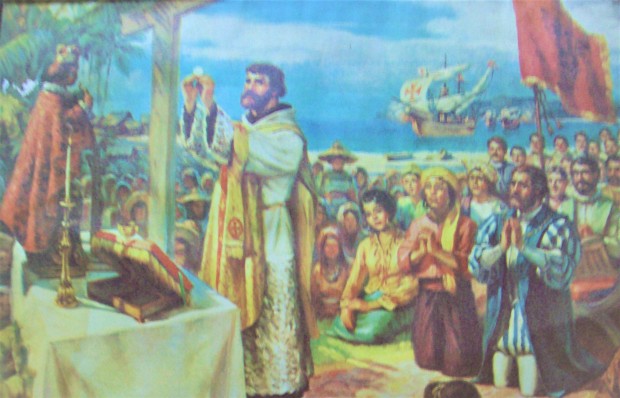
March 31, 1521 – The First Documented Mass in the Philippines was offered by Rev. Fr. Pedro de Valderrama for the celebration of Easter Sunday. A big Cross was also planted in the area. It was hotly debated whether if the First Mass took place either in Limasawa Island, Southern Leyte or in Butuan, Agusan del Norte. In the recent ruling of the National Historical Commission of the Philippines in 2020 and upheld by the Church Historians’ Association of the Philippines in 2021, recognized Limasawa Island as the site of the First Mass in the country.

April 7, 1521 – Arrival at the Rajahnate of Cebu where they were welcomed by Rajah Humabon and the Cebuanos.

April 14, 1521 – The First Baptism was held in Cebu and Magellan gave the newly baptized Reina Juana the images of Santo Niño de Cebu, El Ecce Homo and Virgen de los Remedios.
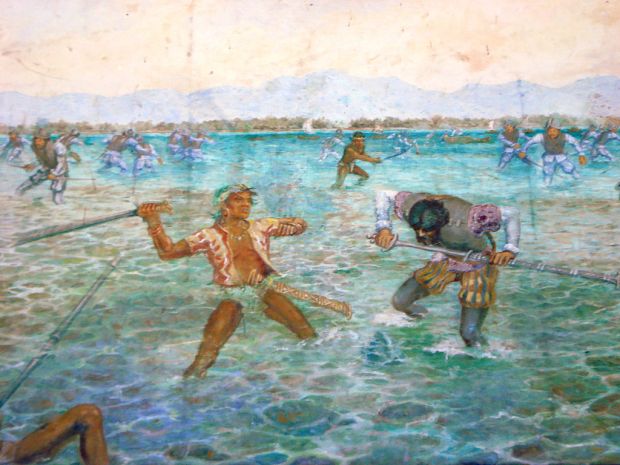
April 27, 1521 – Death of Magellan in the Battle of Mactan headed by Lapu-Lapu. The Spaniards left a few days later to continue their journey to the Moluccas.
November 8, 1521 – Arriving at Tidore in the Moluccas.
December 21, 1521 – The ship “Victoria” under the command of Juan Sebastian Elcano leaves the Moluccas to return home, sailing west towards the Cape of Good Hope.
September 8, 1522 – “Victoria” arrives at Seville, technically completing the circumnavigation.
The Reconquista and the Evangelization of the Philippines
Over the next several decades since the successful circumnavigation, other Spanish expeditions were dispatched to the islands. In 1543, Ruy López de Villalobos led an expedition to the islands and Leyte and Samar and named the islands as “Las Islas Filipinas” in honor of Philip, the Prince of Asturias, later crowned as Philip II of Spain on January 16, 1556, when his father, Charles I of Spain (who also reigned as Charles V, Holy Roman Emperor), abdicated the Spanish throne. The name was then extended to the entire archipelago later on in the Spanish era.
In 1564, El Adelantado Miguel López de Legazpi was commissioned by the Viceroy of Mexico, Luís de Velasco, to lead an expedition in the Pacific Ocean, to find the Islands where the earlier explorers Ferdinand Magellan and Ruy López de Villalobos had landed in 1521 and 1543, respectively. Members of the expedition included six Augustinian missionaries, headed by Rev. Fr. Andrés de Urdaneta, OSA, who served as navigator and spiritual adviser, Melchor de Legazpi (Miguel López de Legazpi’s son), Felipe de Salcedo (one of Miguel López de Legazpi’s grandsons), Martin de Goiti and Guido de Lavezarez (a survivor of Ferdinand Magellan’s expedition). It is from this expedition that the Reconquista and the formal beginning of Christianization of the Philippines will begin.

April 1565 – The Arrival of Adelentado Miguel Lopez de Legazpi in the Philippines accompanied by the Augustinian Friars (Order of St. Augustine) headed by Rev. Fr. Andres de Urdaneta, OSA.

April 28, 1565 – The discovery of the image of Santo Niño de Cebu by Juan Camus and named the place dedicated to the Most Holy Nameof Jesus. A confraternity was also established with Legazpi and his aramada enlisted as members. A Church was immediately established in honor of the Child Jesus of Cebu.
June 4, 1565 – The conversion of Rajah Tupas, King of Cebu to the Catholic faith.

May 19, 1571 – Miguel López de Legazpi took possession of Manila, after Mass in honor of Saint Pudentiana (Santa Potenciana), who was then declared patroness of the city and of the entire Islands. Her relics arrived in the Philippines on January 12, 1595, and were received with great jubilation, paraded through the streets of Manila. They are presumed lost or destroyed during World War II. Until September 1963, her feast was obligatory. She was invoked against typhoons and storms. The Basilica of St. Pudenziana in Rome was designated as the Church for Filipinos who worked and lived in the Eternal City.
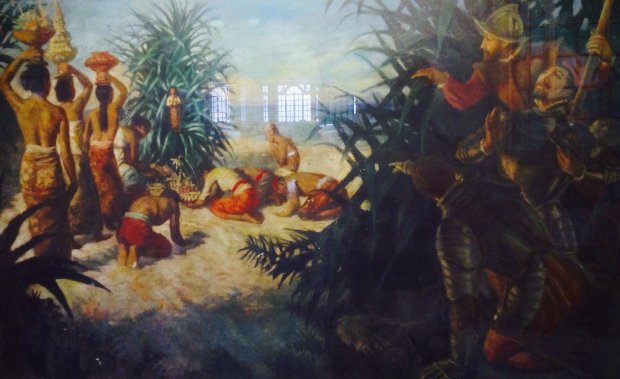
May 19, 1571 – The discovery of the image of Nuestra Señora de Guia that was being worshiped as a pagan deity by the natives.

1572 – The Church of the Most Holy Name of Jesus was established in Tondo, Manila and the image of Santo Nino de Tondo was enthroned in that church that would later become the center of the Santo Nino devotion in Manila, aside from Pandacan, Manila. The image was sacrilegeously stolen in 1972 and it coincided with the ravages of Typhoon Gloring where it rained for days unceasingly that killed millions of people and properties destroyed. This catastrophy led the majority of Filipinos believed that this was the result of the theft of the miraculous image of Santo Niño de Tondo. The image was retrieved and re-enthroned to his altar on August 2, 1974.
June 24, 1571 – The Founding of Manila and the colonial Church was first placed under the Archdiocese of Mexico.

1572 – 1575 – The discovery of the image of Nuestra Señora de los Remedios “Birhen sa Cotta”, one of Ferdinand Magellan’s gift to Reina Juana, at a well while the construction of Fort San Pedro was going on at that time. The image was later moved to Cebu Metropolitan Cathedral yet the image’s whereabouts are unknown to this day since the Cathedral was bombed during the Second World War.

1571 – The establishment of the Manila Cathedral, then known as “Church of Manila”, dedicated to “La Purisima y Inmaculada Concepcion” and became the seat of the Archdiocese in 1579. The Cathedral went on different structural changes due to natural and manmade disasters that occurred in the country over the years. The Manila Cathedral was raised to the dignity of Minor Basilica April 27, 1981 by Pope St. John Paul II.
1571 – The Church of St. Paul was established by the Augustinians which will later to be called San Agustin Church.
June 24, 1571 – The Founding of Manila and the colonial Church was first placed under the Archdiocese of Mexico.

September 14, 1571 – The image of Santo Cristo de Lubao was gifted by Martin de Goiti to the people of Lubao, Pampanga yet it was buried by it’s ruler Datu Macabulos for his hatred to the Christian faith. The image was discovered after the great floods of 1700s and great veneration was given to the image.
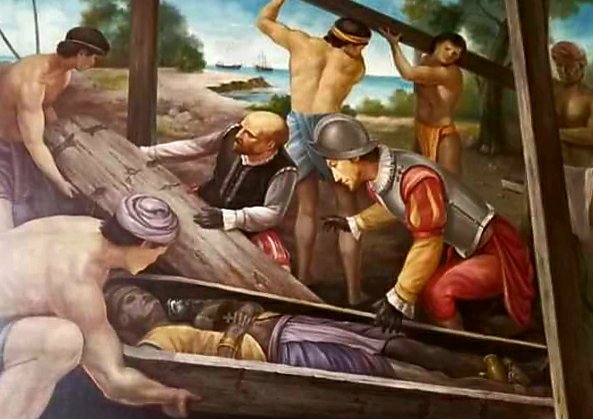
August 20, 1572 – The discovery of the image of El Ecce Homo of Cebu, one of Ferdinand Magellan’s gifts, in the grave believed to be that of Rajah Humabon, the ruler of Cebu whom Magellan met in 1521 and influenced his fellow people to accept Christianity. The image is currently enshrined at his special altar at the Minor Basilica of Santo Niño de Cebu and his feast are celebrated every August 20 and Shrove Tuesday.

1575 – Fray Domingo de Salazar, OP became the First Bishop of Manila. Bishop Salazar, a disciple of Fray Bartolome de las Casas, OP, fought for the protection of the natives from the abuse of Spanish officials.
1578 – The arrival of the Order of the Friars Minor, more popularly known as the Franciscans, and named their province after Pope St. Gregory the Great.
1578 – The San Lazaro Hospital was established by Fray Juan Clemente, OFM which is said to be the first hospital in the country. Fray Juan Clemente would also establish the San Juan de Dios Hospital with Fray Juan Fernandez de Leon as it’s chaplain.
February 6, 1579 – The Diocese of Manila was established as part of the Archdiocese of Mexico.
1581 – The arrival of the Society of Jesus, more popularly known as the Jesuits.
1582 – The Synod of Manila was held under the leadership of Fray Domingo de Salazar, OP, The first Bishop of Manila which tackles on the missionary work and protection of natives from abuse by the Spanish civil authorities and the principalla.
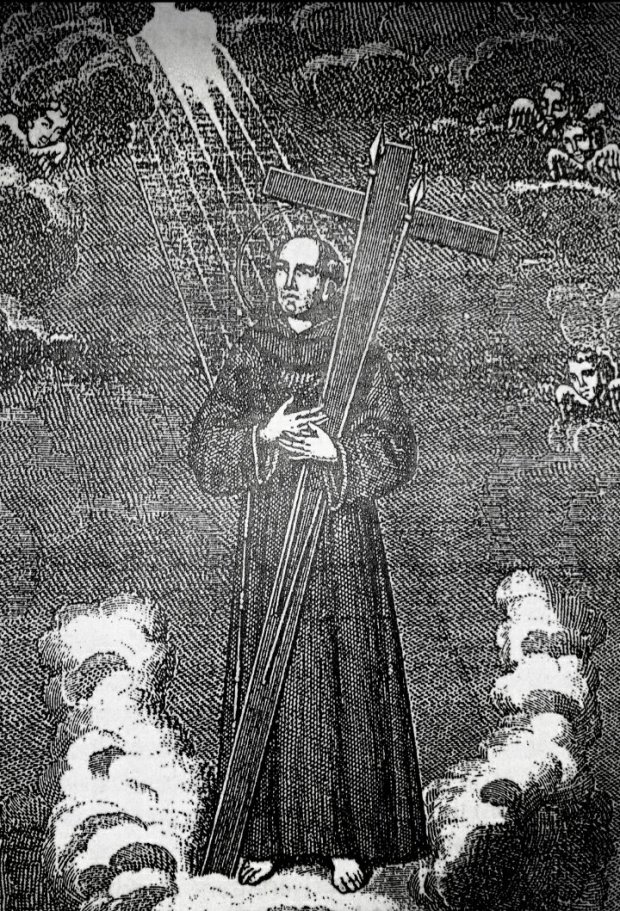
1584 – The arrival of St. Pedro Bautista, OFM in the Philippines and became it’s Custos in 1587. St. Pedro Bautista became known for his development efforts in different Franciscan missions by establishing towns in Laguna, Bicol Region, Quezon Province, Zambales, Manila and Quezon City. He is recognized as the founder of the hot springs in Los Baños, Laguna and determined its medical element. He also strongly defended the rights of the indigenous peoples of Zambales.
July 21, 1587 – The arrival of the Order of Preachers, more popularly known as the Dominicans, and named their province after Our Lady of the Most Holy Rosary.
1588 – The Dominicans established the Confraternity of the Rosary in Intramuros and proliferated throughout the whole archipelago. St. Lorenzo Ruiz would became one of its members. Centuries later, the Guardias de Honor de Maria, now the Perpetual Rosary Association was founded in 1872.
1589 – The Colegio de Santa Potenciana was establsihed by the Franciscans and it became the first school for girls in the Philippines.
1591– Pope Gregory XIV issued the bull Cum Sicuti addressed to the Bishop of Manila which addresses and reiterate the Church’s teaching against the slavery of the natives.
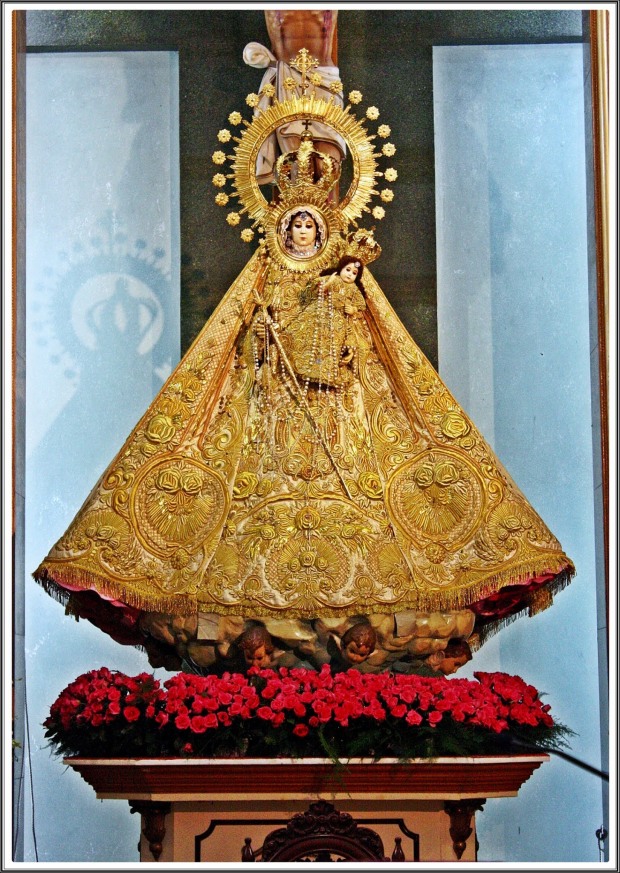
1593 – Governor General Luis Perez Dasmariñas commissioned the image of Nuestra Señora del Santisimo Rosario – La Naval de Manila with the help of a Spanish Captain turned Dominican priest Don Hernando de los Rios Coronel.

1593 – The pubication of “Doctrina Christiana, en lengua Española y Tagala, corregida por los Religiosos de las Ordenes, Impresa con licensia, en San Gabriel, de la Orden de S. Domingo. En Manila, 1593” – the oldest dated book published in the Philippines by the Dominican Order in order to catechize the natives.
1595 – A royal decree divides the Philippine provinces among religious orders.
1595 – Colegio de San Ildefonso was established by the Jesuit priests Fr. Antonio Sedeño, SJ, Fr. Pedro Chirino, SJ and Fr. Antonio Pereira in Cebu. It was the earliest known college founded in the Philippines.
August 14, 1595 – The Archdiocese of Manila along with its suffragan Dioceses of Cebu, Nueva Segovia and Nueva Caceres were established.
September 1595 – The Royal and Pontifical University of San Ignacio ws established by Fr. Antonio Sedeño, SJ in 1590 and opened in 1595. It became the first Royal and Pontifical University in Asia yet it was unfortunately closed in 176 with the expulsion of the Jesuits.
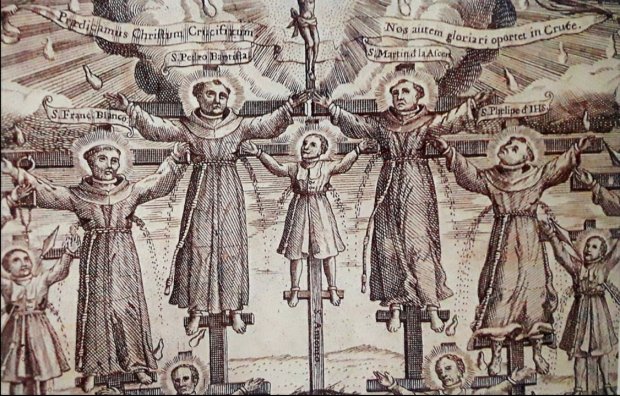
1597 – The martyrdom of the First Martyrs of Nagasaki, Japan which includes San Pedro Bautista, OFM and San Felipe de Jesus, OFM – The First Mexican Saint. The Martyrs were canonized on July 10, 1862 by Pope Pius IX.

1600 – The Jesuits commissioned the image of El Glorioso Patriarca Señor San Jose for their church in Mandaue, Cebu – the oldest dated venerated image of St. Joseph in the Philippines. The Church will later be declared as the National Shrine of St. Joseph in 2001.
August 25, 1601 – The etablishment of the Colegio-Seminario de San Jose by the Jesuits.

1604 – The arrival of the paper mache made image of Nuestra Senora del Santisimo Rosario y Visitacion de Piat in the country from Macau and was later enthroned in Piat, Cagayan in 1620. Due to numerous miracles attributed to her intercession, the image was Canonically Crowned on June 20, 1954.
1606 – Arrival of the Order of the Augustinian Recollects, more popularly known as the Recoletos, and named their province under St. Nicholas of Tolentino. Centuries later, the Filipino Recollects established the Province of St. Ezekiel Moreno in 1998.

1607 – The reported appearance of Nuestra Señora del Pilar in Morong, Bataan to two captured Moro pirates. When the image of Nuestra Señora del Pilar was shown to them, they quickly identified that this was the lady that they saw in the vision. Since then, the church in the seaside of Morong was dedicated to the Virgin of the Pillar to commemorate this unusual event and the devotion to the Virgin of the Pillar grew and strengthen over the centuries. The image received the honor of Canonical Coronation on October 10, 2018.
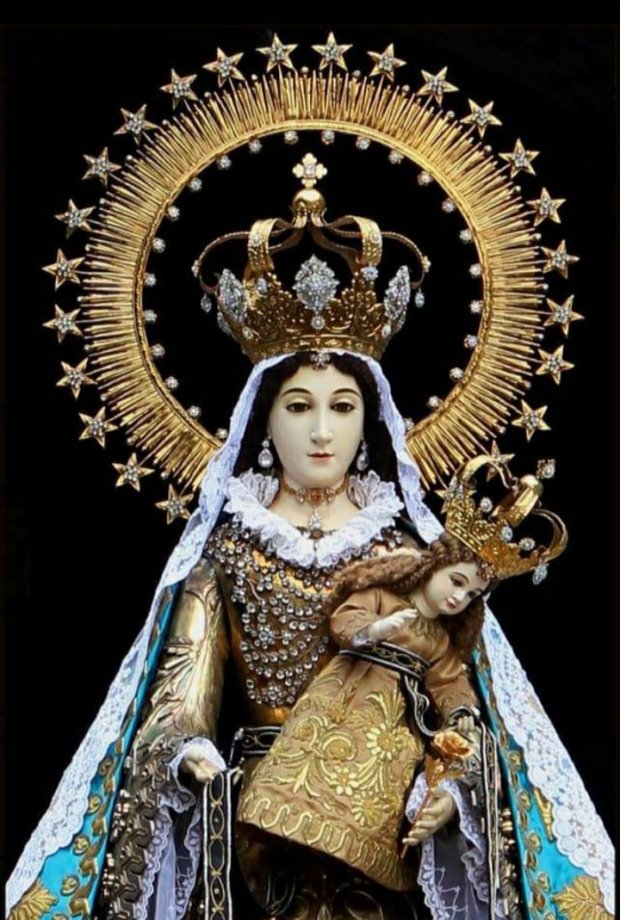
1607 – The establishment of the Cofradia de la Nuestra Señora de la Consolacion y Correa in Intramuros, Manila and it’s membership and devotion to spread to the provinces. The confraternity gives spiritual monetary assistance to people especially the poor who wishes to pursue a religious vocations. The image of Nuestra Señora de la Consolacion y Correa of Intramuros was Canonically Crowned on September 4, 2000.

1610 – The reported apparition of the Virgin of Manaoag to a farmer where she asked that a Church will be built on the spot of the apparition. The people would then name the place Manaoag.
1610 – The publication of “Arte y reglas de la lengua tagala” by Rev. Fr. Francisco Blancas de San Jose, OP.

1611 – 1619, 1639 – The reported apparitions of Nuestra Señora de la Inmaculada Concepcion de Caysasay took place on two separate occasions.

April 28, 1611 – The University of Santo Tomas, then known as Colegio de Nuestra Señora del Santisimo Rosario was established in Intramuros, Manila upon the will of Archbishop Miguel de Benavides, OP. The Colegio was later renamed as ‘Colegio de Santo Tomas” On November 20, 1645 Pope Innocent X elevated the college to the rank of a university and in 1680 it was placed under royal patronage. King Charles III of Spain granted it the title of “Royal University” in 1785. Pope Leo XIII made the University of Santo Tomas a “Pontifical University” on 1902 and in 1947, Pope Pius XII bestowed upon it the title of “The Catholic University of the Philippines”. Thus its complete name is The Royal and Pontifical University of Santo Tomas, The Catholic University of the Philippines. UST is now known as the only extant Pontifical University in the country and the oldest existing University in the Philippines and in Asia.
June 1611 – The arrival of the Order of Hospitaliers of St. John of God in Manila headed by Bro. Juan de Gamboa and Br. Luca de los Angeles. The Order administer numerous hospitals and centers in the country. One of it’s well known members was Bro. Apolinario de la Cruz, OH who was more popularly known as “Hermano Pule” who founded the syncretic “Cofradia de San Jose”.
1613 – The publication of the first Spanish-Tagalog dictionary entitled “Vocabulario de Lengua Tagala” by Fr. Pedro de San Buenaventura, OFM. This dictionary would be later instrumental on translating the famed Laguna Copper plate, an important artifact of Pre-Hispanic Philippines.

December 11, 1614 – the arrival of Blessed Takayama Ukon, a daimyo and samurai in Japan in Manila along with other exiled Japanese Christians because of the raging persecution in that country.

1618 – The arrival of the image of Nuestra Señora del Carmen de San Sebastian – the First image of Our Lady of Mount Carmel in the Philippines. Due to the numerous miracles attributed to her intercession, the image received the honor of Canonical Coronation in August 18, 1991.
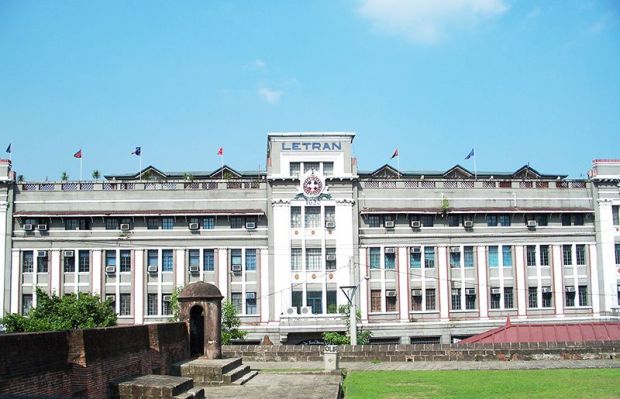
1620 – Colegio de San Juan de Letran was established by Don Juan Geronimo Guerrero, then known as “Colegio de Niños Huerfanos de San Juan de Letran”, to educate the orphans of Spanish soldiers to be good Christians. After it merged with the Colegio de San Pedro y San Pablo, it took it’s present name in 1706.

1621 – The arrival of Ven. Mo. Jeronima de la Asuncion, OSC in Bolinao and established the Real Monasterio de Santa Clara in Manila – The First Monastery for Women in the Philippines.
1621 – The establishment of San Sebastian Church and Convent with the main altar dedicated to Nuestra Señora del Carmen.
1622 – Fray Agustin de San Pedro, OAR was assigned to Mindanao for the missions and would establish a fort in Cagayan de Oro to protect the converted natives from the invading Moros and became the town’s warrior and protector earning him the title “El Padre Capitan”.

1626 – The fort for Cagayan de Oro was built and an image of Our Lady of the Rosary was enshrined and was called “Birhen sa Kotta”. It is said that the Virgin made an appearance to Moro invaders saying “Why are you harming my people.?”. The planned attack did not went through and later were converted.
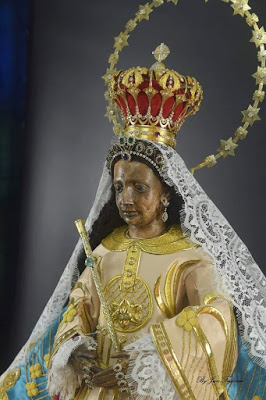
March 25, 1626 – Governor General Juan Niño de Tabora brought to the country the image of the Immaculate Conception from Mexico which will later given the title “Nuestra Señora de la Paz y Buen Viaje” of Antipolo. The image would later accompany five galleons of the Manila – Acapulco Galleon Trade and miracles were attributed through her intercession. The image was canonically crowned in Manila on November 28, 1926.
October 24, 1632 – Colegio de Santa Isabel was established for orphans and later opened to Filipino meztizas.
1634 – Sor Martha de San Bernardo of Pampanga was invested with the habit of the Poor Clare nuns at sea boarding to Macau to establish a monastery there. Sor Martha became the first Filipina nun in history.
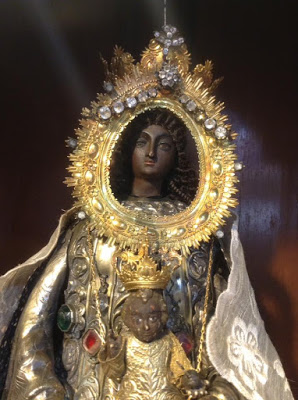
1634 – The arrival of the image of Nuestra Senora de la Salud in our country. The Black Virgin of Health would be instrumental for the end of the Second Chinese Revolt of 1639 when the government and church authorities pleaded for her help. On March 15, 1640, the revolt ended with the surrender of the rebels.
1636 – The investiture of Sor Madalena de la Concepcion of Pampanga and Sor Juana de San Antonio of Bataan (the first known Filipina woman writer) in Manila. Both made solemn vows the following year.
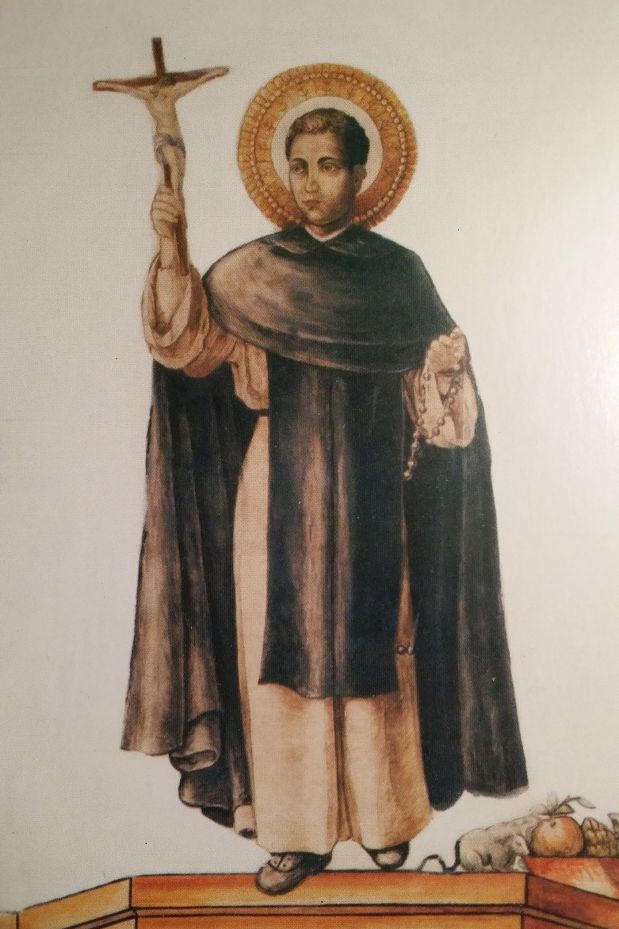
1637 – St. Martin de Porres was reported to have bilocated in the Philippines, particularly at Colegio de San Juan de Letran, attending to a sick friar in Intramuros. This event was witnessed and sworn by Don Juan Geronimo Guerrero and Diego de Santa Maria.

September 29, 1637 – St. Lorenzo Ruiz, along with Rev. Fr. Antonio Gonzales, OP, Rev. Fr. Guillaume Courtet, OP, Rev. Fr. Miguel Aozaraza, OP (Missionary of Bataan), Rev. Fr. Vincente Shiwozuka de la Cruz, OP and Lazaro of Kyoto by the gallows and pit torture.

1643 – Servant of God Father Francesco Paliola, SJ, a priest from a prominent family in Naples, Italy, arrived in Manila and later assigned to Iligan on January 2, 1644, beginning a mission in Mindanao that would take him to Dipolog, Dapitan and the rest of the Zamboanga Peninsula, spreading the Catholic faith to the locals, including the Lumads. He ministered to the baptized as a loving pastor, so much so that even the non-Christians recognized him as saintly. He established settlements or reductions, to better catechize and serve the people. He was murdered by a group of apostates on January 29, 1648. In time for the Dipolog diocese’s Golden Jubilee, the local phase of the path towards the canonization of Father Palliola was closed on September 14, 2017.

March 15 – October 4, 1646 – The Five Naval Battles of La Naval de Manila took place where the victory of the joint Spanish and FIlipino armada defeated the Dutch fleet were attributed to the intercession of Nuestra Señora del Santisimo Rosario in Intramuros. The Victory of the Five Naval Battles was declared a miracle through the Virgin of the Rosary on April 9, 1662 and ordered an annual festivity to commemorate these victories. The title “La Naval de Manila” was added to her name and she was later called as “La Gran Senora de Filipinas”. Pope St. John Paul II named the Santo Rosario as the “Queen and Protectress of the Philippines and the whole of Asia” and dedicated the Asian continent to the Virgin on February 18, 1981.

1646 – The discovery of the image of Nuestra Señora del Santisimo Rosario de Iloilo while excavations were being made to prepare trenches for the defense of the City against an invading Dutch squadron under the command of Admiral Spielberg. The discovery of this image so inspired the defenders under the leadership of Don Diego de Quiñones that they hurled back the invaders in the battle that ensued and won. Today, after surviving more than three centuries, this image is venerated in the parish church of San Jose, Iloilo. The image was Episcopally Crowned on October 11, 1970.
1650 – The establishment of the Confraternity of the Most Holy Scapular of Our Lady of Mount Carmel based in San Sebastian Church that propagated the devotion to the Brown Scapular in the Philippines prior to the arrival of the two branches of the Carmelite Order three centuries later.
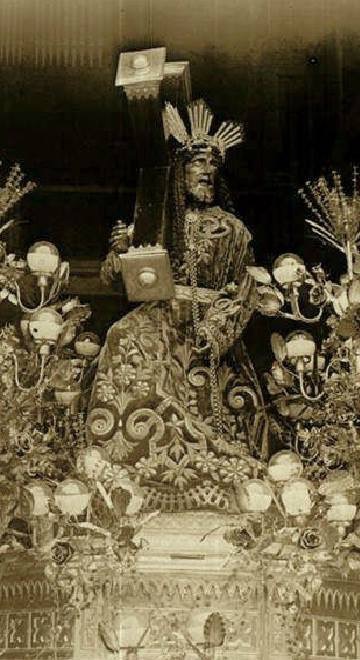
1651 – The establishment of the Cofradia de Nuestro Padre Jesus Nazareno by the Augustinian Recollect Friars in the old San Nicolas Church in Intramuros, Manila. The Cofradia propagated the devotion to the Nazareno and were in charge of the Palm Sunday procession in the Walled City.
1659 – The Foundation of Beaterio de Bolinao, the first native beaterio in the country by Fray Juan de la Madre de Dios Blancas, OAR. It was unfortunately dissolved in 1679.
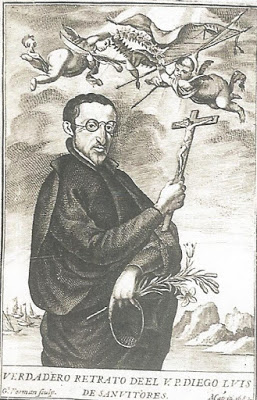
1662 – Blessed Diego Luis de San Vitores arrived in the Philippines and sets his sight for a missionary work for Guam. After the approval of the mission from the Spanish Crown, he recruited laymen for the missionary work, one of them is St. Pedro Calungsod. Both Calungsod and Padre Diego was martyred on April 2, 1672. Padre Diego was beatified 1985.

1663 – The image of Santo Nino de Ternate was brought from Ternate, Moluccas by the Mardicas natives to Maragondon, Cavite where the Mardicas fled Ternate due to impending attacks of Chinese pirates. The place was later named Ternate and the devotion to Santo Nino de Ternate flourished. The feast of the Santo Nino de Ternate is celebrated every January 6.
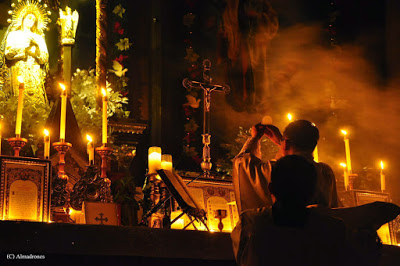
1668 – Rev. Fr. Francisco Ignacio Alcina, SJ first recorded the existence of the Misas de Aguinaldo (now morphed as “Simbang Gabi”) in his “Historia de las Islas e Indias de Bisayas” which was later corroborated by Rev. Fr. Pedro Murillo Velarde’s “Cursus Iuris Canonici Hispanici et Indici” printed in 1763 where he testifies the continuation of this tradition a century after. Fathers Vicente Salazar, Benito Corominas and Serapio Tamayo later wrote that the same tradition continued in the 18th and 19th centuries. The Misas de Aguinaldo were the “Rorate Caeli” Votive Masses in honor of the Blessed Virgin Mary offered for 9 days before Christmas day for “preservation of the Catholic Faith in the Islands”. It was later ratified by the Philippine Catholic Bishops during the sessions of the First Plenary Council in 1953 and a special indult was granted by the Holy See in 1961 for five years. The permission was not revoked in light of circumstances of the Liturgical Changes by the Second Vatican Council. The practice continues up to this day with developments on it’s liturgy in the country.
1668 – The arrest and imprisonment of Sor Juana de San Antonio of Monasterio de Santa Clara for heresy by the Inquisition of Manila. The Monasterio no longer accepted natives until 1880.

August 11, 1670 – Pope Clement X issued the Bull Sacrosancti Apostolatus Cura, confirming Pope Clement X’s declaration of then Blessed Rose of Lima as Patroness of Peru, and extending her patronage to the whole American continent, including the Philippines, and of the Indies. St. Rose of Lima was later canonized in 1671.

April 2, 1672 – The Martyrdom of St. Pedro Calungsod and Blessed Diego Luis de San Vitores at the Marianas. Pedro Calungsod was beatified on March 5, 2000.
1675 – The ordination of the first two Filipino-Spanish mestizo priests: Fray Ignacio Mercado, OSA and Fray Nicolas de San Pedro del Castillo, OSA.

1682 – Venerable Mother Francisca de Fuentes del Espiritu Santo, along with Antonia Ezguerra vda. de Fuentes de Jesus Maria and Sebastiana Salcedo de Jesus (an India Mystic from Pasig) began to live together as a community and other beatas joined and the Beaterio de Santa Catalina de Sena was officially inaugurated with Madre Francisca as the founding prioress. At present, the Beaterio became the Congregation of Dominican Sisters of St. Catherine of Siena and currently administer Siena College in Manila and Quezon City. Mother Francisca was declared Venerable on July 5, 2019.

1684 – Venerable Madre Ignacia del Espiritu Santo established the Beaterio de la Compania under the spiritual direction of the Jesuits and it wad inaugurated in 1703. The Beaterio was canonically erected as a Diocesan Congregation by Archbishop Jeremias Harty of Manila in 1906 and it’s constitution recieved Pontifical approval in 1948. The Beaterio became the first one to admit native beatas and would later became the Religious of the Virgin Mary and administer St. Mary’s College in different parts of the country. Mother Ignacia was declared Venerable in 2007.

April 12, 1692 – The date where the image of Nuestra Senora de la Soledad de Porta Vaga was enthroned by Juan de Oliva to her altar at the old Ermita de Porta Vaga in Cavite. Since then, several miracles were reported once the image was enshrined. The image was later moved to her current shrine in San Roque Parish since the old Ermita de Porta Vaga was heavily damaged during the Second World War. The painting was Canonically Crowned on November 18, 2018 along with the elevation of San Roque Parish as the Diocesan shrine of Nuestra Senora de la Soledad de Porta Vaga and the formal declartion of the Virgin of Solitude as the Queen of Cavite Province.
1697 – The Royal order declares Filipino Indios to have “purity of blood” enabling their admission as regular members of Spanish religious congregations; this is not however observed in the country.
1698 – The founding of the Filipino Clergy by Archbishop Diego Camacho y Avila of the Archdiocese of Manila.
December 20, 1698 – The ordination of the first documented Indio priest, Don Francisco Baluyot of Guagua, Pampanga.
April 28, 1702 – The Royal and Conciliar San Carlos Seminary was established for the natives in accordance with the decrees of the Council of Trent.
1703 – Ordination of Don Blas de Santa Rosa of Pampanga who would later establish the Parish of San Policarpio in Cabuyao, Laguna – the First native priest to establish a parish.

March 25, 1703 – The Publication of the first edition of “Ang Mahal na Pasion ni Jesukristong P. Natin na Tola” by Don Gaspar Aquino de Belen with ecclesiastical approval based from original Spanish texts of Padre Thomas de Villacasten, SJ. In January 23, 1704 the Archbishop of Manila granted 40-day Indulgence for the recitation or singing of the Pasion.

1710 – The Carving and enthronement of the image of Nuestra Señora de Peñafrancia de Naga. Because of the numerous miracles attributed to the Virgin’s intercession and her protection, in June 10, 1895, Pope Leo XIII declared Nuestra Señora de Peñafrancia was proclaimed the “Patroness of the City of Nueva Caceres” (Naga City). The image of Ina was Canonically Crowned on September 20, 1924 – the Second Marian image in the country who received such honor.
1711 – The publication of “Vocabulario de la Lengua Bisaya” by Rev. Fr. Pedro Mateo Sanchez, SJ.
1717 – The arrival of the image of Nuestra Señora de los Desamparados de Manila (carved in 1713) from Valencia, Spain by Rev. Fr. Vicente Ingles, OFM.

1719 – Servants of God Dionisa de Santa Maria Talangpaz and Cecila Rosa de Jesus Talangpaz established the Beaterio de San Sebastian de Calumpang which now known as the Augustinian Recollect Sisters who administer St. Rita College and Colegio de Santa Rosa.

January 23, 1720 – Archbishop Francisco de la Cuesta, OSA, Archbishop of Manila and Interim Governor General of the Philippines offered his baston de mando to the image of Nuestra Señora de los Desamparados de Manila in thanksgiving of his release from prison after he was imprisoned by the assasinated Governor General Fernando Manuel de Bustillo Bustamante. The Virgin of the Abandoned of Santa Ana, Manila was acclaimed “La Gobernadora de Manila”. The image was canonically crowned on May 12, 1991.
1721 – Pope Innocent XIII decreed a Special Feast of the Santo Nino de Cebu to be set every Third Sunday of January. This feast would later be observed nationally as the “Feast of the Santo Nino”.
1738 – King Philip V of Spain opened the Colegio de San Juan de Letran and the University of Santo Tomas to Chinese and Tonkinese students, since China and Tonkin (now VIetnam) did not have Christian educational institutions at that time.

1734 – The placement of the bas relief image of Nuestra Señora del Pilar at Fort Pilar in Zamboanga City where she enjoyed much devotion from both Christians and Muslims in Zamboanga City. The Fort was later converted to a Shrine and numerous miracles were reported through her intercession. The Virgin on the facade was Canonically Crowned on October 12, 1960.
1740 – The foundation of the Beaterio de Santa Rosa de Pasig by Fray Felix de Trillo, OSA.
1750 – The foundation of the Beaterio de Sanra Rosa de Lima by Madre Paula de la Santisma Trinidad, a Dominican Tertiary, as a school for girls. The Beaterio would later became Colegio de Santa Rosa and it is currently administered by the Augustian Recollect Sisters.

1753 – St. Vicente Liem de la Paz, A Vietnamese Christian, entered the Dominican order after completing his studies at Colegio de San Juan de Letran and later continued his studies at the University of Santo Tomas until he was ordained a priest in 1758. He returned to Vietnam to administer his people until he was martyred on November 7, 1773 by decapitation. He was canonized in 1988 by St. John Paul II. His alma mater, Colegio de San Juan de Letran chose him for it’s patron and his statue can be seen decked with the colegio’s uniform and displayed at the patio of Letran.
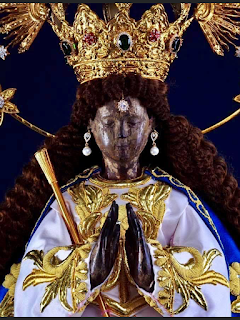
August 9, 1758 – A Royal Decree issued by the King of Spain decreed that the Blessed Virgin Mary under the title “Nuestra Señora de Guia” as the “Sworn Patroness of Manila” by reason of the continual favors that she has lavished on it. A few centuries later, the image was Canonically Crowned on December 30, 1955.
1762 – 1763 – The British troops invaded the Philippines and occupied Manila and Cavite. Many Churches and convents were desecrated, pillaged and looted of valuable liturgical items, record books and jewels on sacred images in the process, one of them was the desecration of the image of Nuestra Señora del Santisimo Rosario – La Naval de Manila.

1763 – The end of the British invasion of the Philippines with a turn over ceremony took place at the plaza of Santa Cruz Church in Manila and it is also said that the image of Nuestra Señora del Pilar de Manila faced the plaza for this turn over.
1768 – The Expulsion of the Jesuits to their mission lands due to their suppression ordered by Pope Clement XIV and it was enforced in the Philippines in 1768. The Jesuits returned in 1859 when the society was restored by Pope Pius VII in 1814 and took over the Mindanao missions.
1778 – Rev. Fr. Manuel Blanco, OSA published the book “Flora de Filipinas”, a compendium of numerous herbs and flowers found in the Philippines, one of the first comprehensive scientific books on this topic.
1778 – 89 – The petition for the foundation of the Monasterio de Santa Rosa de Lima for Chinese mestizas by the Tuazon family. The petition was ultimately disapproved.
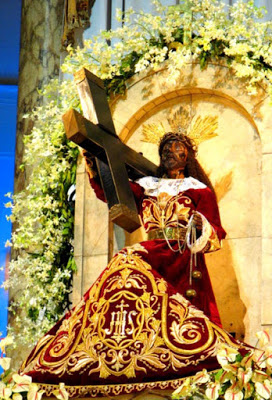
1787 – The Traslacion of the second image of Nuestro Padre Jesus Nazareno that is kept at the San Nicolas Church’s sacristy to St. John the Baptist Church in Quiapo, Manila upon the orders of Archbishop Basilio Sancho y Santas Justa y Rufina.

September 15, 1788 – The painting of Nuestra Senora de los Dolores de Turumba was found by a group of women at the lakeshore of Laguna de Bay after the fishermen found the image in their catch two days prior. The ladies went immediately to their parish priest and reported the strange happening. The priest immediately went to the site, together with his altar servers and the rest of the community singing the Litany of the Saints. Once the the priest got a hold of the image, the image was lifted lightly and the whole town jumped for joy, singing and dancing all the way back to the Church that marked the beginning of the “Turumba” dance tradition. A statue version of the image was commissioned for processions. The Lupi fiestas in honor of Nuestra Senora de los Dolores de Turumba became the longest Marian festival in the country that starts on Viernes de Dolores (Friday before Palm Sunday) and ends on Sunday nearest to September 15.

June 29, 1812 – The Birth of Rev. Fr. Pedro Pelaez, an insular secular priest who became the diocesan administrator of the Archdiocese of Manila. He advocated for rights of the native secular priest to manage the growing number of parishes in the country. His life ended abruptly when he was trapped in the Cathedral during the earthquake of 1863.

1816 – 1824 – Rev. Fr. Diego Cera de la Virgen del Carmen, OAR constructed the famed Bamboo Organ at St. Joseph Parish (now a Diocesan Shrine) in Las Piñas City.

1837, 1841-1842 – St. Andrew Kim Tae-gon visited the Philippines and stayed in Manila and in Lolomboy, Bocaue, Bulacan while he was studying for the priesthood. He was ordained in 1844 making him the first Korean priest and was martyred in Korea in 1846. He was canonized along with 102 Korean Martyrs in 1984. He became the Secondary Patron Saint of Lolomboy, Bulacan in 1986 and the parish became the Diocesan Shrine of St. Andrew Kim Tae-gon on January 30, 2021.
February 6, 1848 – The birth of Narcelo Adonay, the “Palestrina of the Philippines”, a known composer and the primer tiple of San Agustin Church. Some of his works were Pequeña Misa Solemne and Libera Me, Domine.
1850 – The Beaterio de Santa Catalina becomes the first religious community for women to establish a mission house in Mainland China with two Filipina beatas Sor Ana Mateo del Sagrado Corazon de Jesus and Sor Pascuala Biron del Sagrado Corazon de Jesus.
1855 – The publication of “Diario de María”, by Fray Raymundo Lozano Mejía, OSA, parish priest of San Miguel, Iloilo and republished it in 1865 later as “Mes de María” for the May flower devotions which he called “Flores ni María Santísima”.
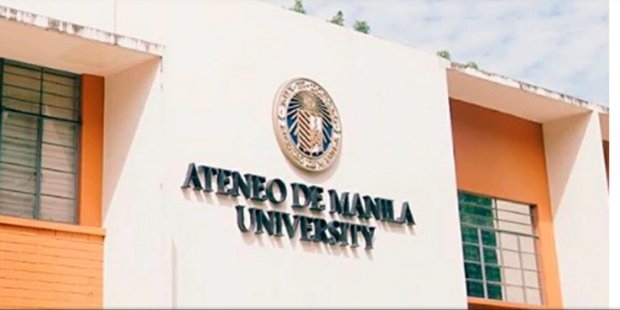
December 10, 1859 – The establishment of Escuela Municipal de Manila which will renamed as “Ateneo Municipal de Manila” and later as “Ateneo de Manila University” by the Jesuits.

1856 – The Jesuits of Intramuros introduced the devotion to the Sacred Heart of Jesus and in 1872, the Apostleship of Prayer was established to further propagate the devotion the Sacred Heart.
1862 – The Arrival of the Daughters of Charity in the Philippines.
1862 – The arrival of the Congregation of the Mission of St. Vincent de Paul, more popularly known as the Vincentians or “Padre Paules” where they opened seminaries for the natives and propagated the devotion to Our Lady of the Miraculous Medal.
1865 – Padre Federico Faura established the Manila Meteorological Observatory which was meant to forewarn the people about the arrival of typhoons and later earthquakes in 1880. In 1884, a royal decree was issued formally recognizing the Manila Observatory as the official Philippine institution for weather forecasting.
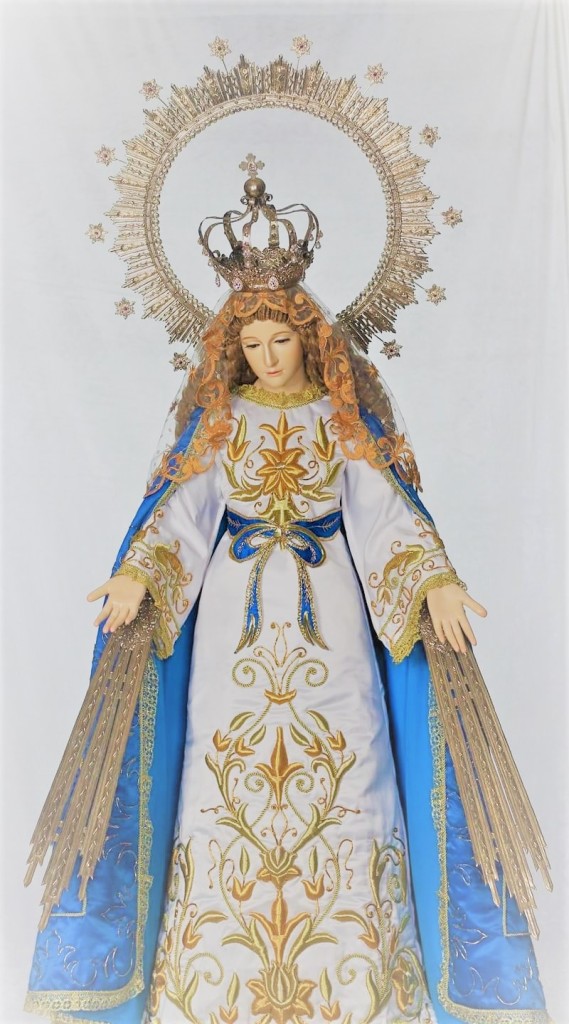
1867 – Rev. Fr. Mariano Sevilla of the Parish (now Diocesan Shrine) of Our Lady of the Assumption in Bulakan, Bulacan published the “Flores de Maria o Marikit na Bulaklak na sa pagninilaynilay sa boong buwan nang Mayo ay inihahandog nang mga deboto kay Maria Santisima” and became the standard for the Flores de Mayo traditions in Luzon.

February 10, 1870 – St. Ezekiel Moreno arrived in the Philippines to complete his theological studies and was ordained at the Manila Cathedral on June 2, 1871. He then administer the missions in the country from 1873 – 1886 in Calapan, (Mindoro), Puerto Princesa, Palawan; Las Piñas; Santo Tomas, Batangas; Intramuros and Santa Cruz in Manila and Imus, Cavite. He was then sent to Colombia was consecrated as a bishop in 1894. He died of cancer of nasopharynx on August 19, 1906 and was canonized on October 11, 1992.
1878 – The founding of the Congregacion de Hermanitas de la Madre de Dios by Fr. Fernando de la Canal, CM in Cebu and it was inaugurated in 1880. The Hermanitas would later be incorporated to the Daughters of Charity in 1895.

September 5, 1880 – Eugenio Saz-Orosco was born in Manila from Señor Don Eugenio Saz-Orozco (the last Mayor of Manila under the Spanish rule) and Doña Feliza Mortera Camacho. He recieved the habit of the Franciscan Capuchins on October 2, 1904 and took the name “Fray Jose Maria de Manila” because he wanted to administer to the people of the Philippines who are struggling with the Catholic faith in the aftermath of the Philippine Revolution. He was ordained a priest on November 30, 1910. Fray Jose Maria de Manila was later executed during the height of the Spanish Civil War on August 17, 1936 and was beatified in October 13, 2013.

1882 – Bishop Casimiro Herrero invokes the intercession of the El Divino Rostro and of Nuestra Señora de Peñafrancia de Naga against the deadly cholera epidemic and due to their miraculous intervention, the heirarchy of the Diocese of Nueva Caceres made a vow to celebrate together the Feast of El Divino Rostro and Nuestra Señora de Peñafrancia de Naga.

1883 – The arrival of the Augustinian Beatas of Barcelona to establish the Beaterio de Agustinas Tercieras de Ultramar founded by Mother Rita and Venerable Mother Consuelo Barcelo y Pages. The beaterio would later be known as the Augustinian Sisters of Our Lady of Consolation who administers La Consolacion College. Mother Consuelo was declared Venerable on June 18, 2002.

1886 – The admission of Sor Teresa de Jesus Andrada (born Antonia Andrada y Avelino of Capiz) to the Beaterio de Agustinas Tercieras de Ultramar. Unwittingly, she would become instrumental to spark the Philippine Revolution when she learned that the brother of a ward of the Beaterio’s orpahange was a Katipunero and adviced that he confessed this outside the confessional to Padre Mariano Gil, Parish Priest of Tondo “to avoid so many deaths and destruction”. This would eventually led to the discovery of the Katipunan. During the Revulotion, the Beatas were spared because the Katipuneros respected them.

1890 – Pope Leo XIII raises the Church of San Sebastian into a Minor Basilica – the First Minor Basilica in the Philippines with privileges and affinity with the Basilicas of St. Peter and St. John Lateran. The Basilica was completed in 1891 – the lone structure of such kind in the world and the first Minor Basilica in the Philippines.
1892 – The arrival of the Religious of the Assumption in Manila who administer Assumption College.

1894 – The publication of “Casaysayan nang Pasyong Mahal ni Jesucristong P. Natin” or “Pasion Genesis” with corrections made by Padre Mariano Pilapil, Rector of Colegio de San Jose of Intramuros which became the standard of the present day “Pasyon”.
The Rise of Nationalism and the Philippine Revolution
The time period from the 1870’s up to 1898, the rise of the nationalist movement was on the horizon with the Propaganda movement headed by the Illustrados Dr. Jose Rizal, Marcelo H. Del Pilar, Mariano Ponce, the brothers Antonio and Juan Luna among others and the movement reached it’s peak with the spark of the Philippine Revolution headed by Andres Bonifacio of the Kataastaasan, Kagalang-glangang Katipunan ng mga Anak ng Bayan, more popularly known as the KKK and the execution of Dr. Jose Rizal 1896. The Philippine Catholic Church was in turmoil in this period with the Anti-Spanish sentiments that led to the closure of churches, schools and other charitable institutions and the merciless killing of priests and religious.

February 17, 1872 – The Unjust execution of Rev. Fr. Mariano Gomes (Parish Priest of Bacoor, Cavite), Rev. Fr. Jose Burgos (Dean of the Manila Cathedral) and Rev. Fr. Jacinto Zamora (Parish Priest of Marikina) were executed in Bagumbayan. THey advocated for the promotion of the Filipino secular clergy and they were accused of provoking the Cavite mutiny (which the actual perpetrators were captured and were sent to Guam in exile). Church bells in Manila were rung at the time of their execution under the orders of Archbishop Meliton Martinez – an ally of the movement for Filipino secular priests.
April 1886 – The arrival of the Order of the Franciscan Capuchins in the country with the intention to establish missions in Carolie and Palau Islands. The Order helped on preventing the further spread of the Aglipayan Schism and propagated the devotion to Nuestra Señora de Lourdes.
September 12, 1895 – The monks of the Order of St. Benedict arrived in the country from the Benedictine Abbey of Our Lady of Montserrat in the Cataluña region of Spain primarily to undertake agricultural and missionary work in Surigao in Mindanao and later in Manila.
August 23, 1896 – The Philippine Revolution began.
1896 – 1898 – The Beatas of the Beaterio de la Compania would later play a role in the Philippine revolution where they began to serve in the Red Cross under the First Philippine Republic.
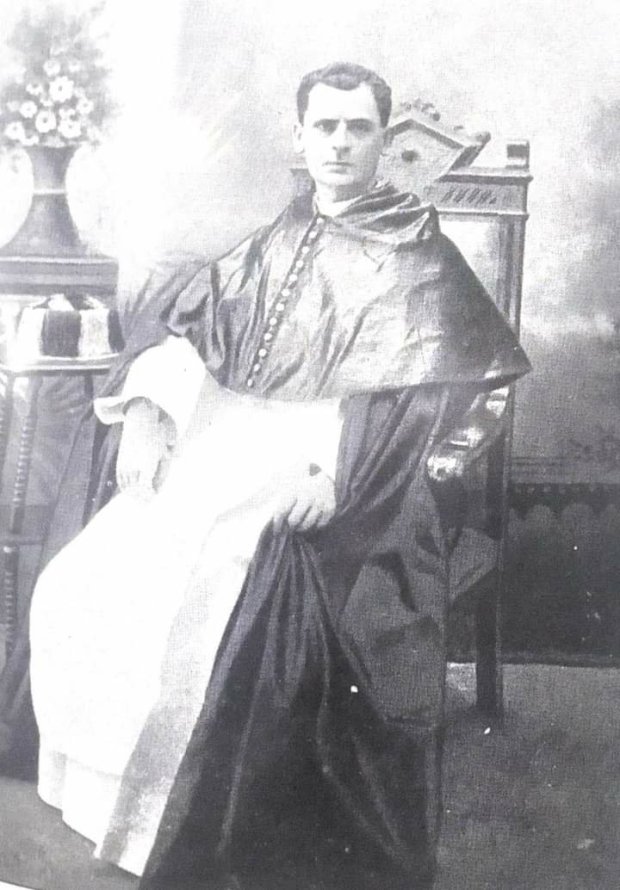
1898 – Blessed Buenaventura Garcia Paredes, OP was sent to the Philippines to complete his studies and later began to teach at the University of Santo Tomas and director of “Libertas” – The Catholic newspaper edited by the University. He would later become the Prior Provincial of the Province of the Holy Rosary Province in the Philippines and it was during his time that the then new UST Campus in Sulucan, Sampaloc, Manila (the current site of the University) was being established. He became the Master General of the Order in 1926 and was martyred in Spain during the Spanish Civil War on August 12, 1936. He was beatified, along with 498 Martyrs of the Spanish Civil war by Pope Emeritus Benedict XVI in 2007. The Thomasian Alumni Center Building was named after him in his honor.
March 23, 1897 – President Emilio Aguinaldo took his oath as President of the Philippine Revolutionary Government in convent of the Holy Cross Parish in Tanza, Cavite.
June 12, 1898 – General Emilio Aguinaldo proclaimed the Philippine Independence from Spain in Kawit, Cavite.
1899 – the First Philippine Republic and the famed Malolos Constitution was established at Barasoain Church in Malolos, Bulacan.
The American Colonization and the Philippine Commonwealth Era
After the Philippine Revolution and the declaration of Philippine Independence, most of the generals of the revolt thought that the Americans were allies because of their support for the revolt. However, with the Treaty of Paris in 1989 where Spain sold the country to the United States, a new and emerging superpower conquered the Philippines under the guise of “Benevolent Assimilation” and spread further hatred to the Spaniards, especially to the Friars the “Black Legend” that demonizes and downplay thier legacy. With this “assimilation”, Protestantism entered the country and numerous local breakaway sects also sprung during this time: The Iglesia Filipina Independiente or more popularly known as the Aglipayans and Iglesia ni Kristo of Felix Manalo.
The Church, now under the leadership of American bishops and later Filipino clergy countered this by inviting other religious orders and congregations which helped on preserving the Catholic faith in the islands.

1901 – A reported Marian apparition to the Aetas of Bacacay, Albay took place. An image of the Virgin based from the vision was made and numerous miracles were reported through her intercession and the apparition site became on of the most cherished sites in Bicolandia where the Mother of God graced her presence to the Aetas of the region. As of this writing, public veneration to the Virgin under the title Nuestra Senora de los Desamparados de Bacacay and pilgrimages to the apparition site is permitted and it is said that the events were given a positive sanction and allowing public devotion and veneration of the Virgin under this title by Bishop Lucilo Quiambao in 2007.

June 17, 1901 – San Beda University opened in 1901 as “El Colegio de San Beda” in Manila administered by the Benedictine Monks and gained the status as a University in 2018.
September 17, 1902 – Pope Leo XIII issued the bull Quae Mari Sinico where he provided instructions on how the Philippine Catholic Church may proceed with the 20th century, particularly on the erection of seminaries, strengthening the missions and the role of Catholic schools.
1904 – The arrival of the Sisters of St. Paul Chartres where the sisters focused on ministering the poor thru caring for the sick, teaching and providing catechesis.
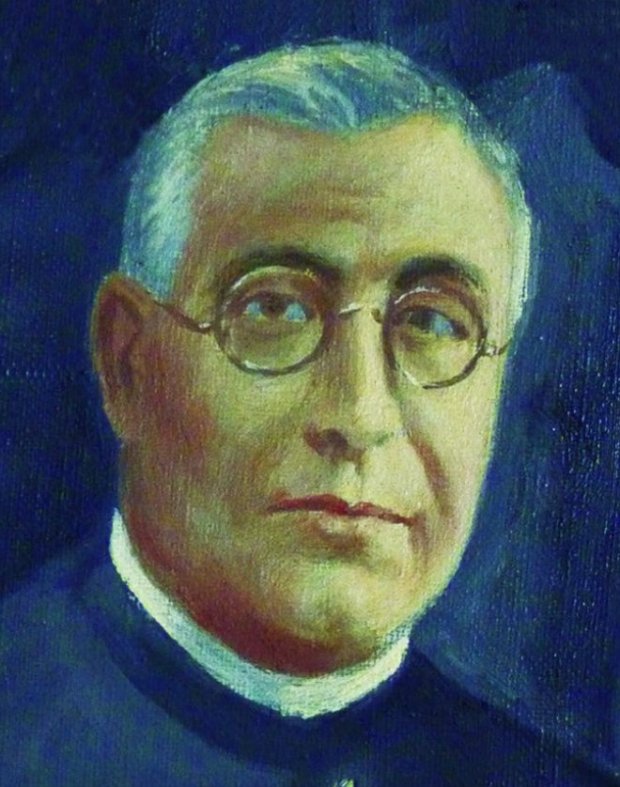
1904 – The arrival of Blessed Ireneo Rodriguez Gonzales, CM to the Philippines to minister the Vincentian missions and seminaries in Manila, Cebu, Naga and Laguna. Fr. Ireneo later returned to Spain where he met his martyrdom on December 6, 1936. He was beatified along with Bl. Jose Maria de Manila and other Martyrs of Spanish Civil War.
June 30, 1904 – The arrival of the Congregation of the Most Holy Redeemer, more popularly known as the Redemptorists in the Philippines, the missionaries helped counter the effects of Protestantism and Aglipayanism. The Congregation introduced the devotion to Our Mother of Perpetual Help.

1906 – The Redemptorists Fathers brought a German copy of the icon of Our Mother of Perpetual Help to the Philippines and it was first enshrined in Malate Church then later moved to Baclaran in 1932. The icon of Our Mother of Perpetual Help became a focal point of devotion and Wednesdays became the day of national devotion to the Virgin of Baclaran.
1906 – The arrival of St. Joseph’s Mission Society of May Hill where they helped on countering the spread of Protestantism and Aglipayanism.

June 29, 1906 – Bishop Jorge Barlin was consecrated as the First Filipino Bishop and was assigned to the Archdiocese of Nueva Caceres.
September 14, 1906 – The arrival of the Benedictine Sisters who would later establish St. Scholastica’s College.
1907 – The arrival of the Congregation of the Immaculate Heart of Mary (CICM) from Belgium and took over the administration several parishes that were left vacant after the revolution and the established numerous schools.

October 5, 1907 – The Canonical Coronation of Nuestra Señora del Santisimo Rosario – La Naval de Manila at Plaza Magallanes, Intramuros, Manila – the First Canonical Coronation held in the Philippines.
December 12, 1908 – The arrival of the Missionaries of the Sacred Heart in Surigao Province and helped on combating Protestantism and Aglipayanism. The Missionaries introduced the devotion to Our Lady of the Sacred Heart.
August 15, 1909 – The arrival of the Society of the Divine Word who administer the faithful of Abra, Benguet and the rest of the country.
April 2, 1910 – Bishop Juan Gorordo became the First Filipino Bishop of Cebu.

June 16, 1911 – The Establishment of the De La Salle University in Manila by the Institute of the Brothers of the Christian Schools who arrived in our country that same year.
August 26, 1915 – The arrival of the Oblates of St. Joseph in the Diocese of Lipa (now an Archdiocese) where the Oblates helped on providing holy and dedicated religious priests and brothers and further propagation of devotion to St. Joseph.

September 6, 1916 – Pope Benedict XV named Servant of God Bishop Alfredo Verzosa as the second Bishop of Lipa – the first Ilocano to become a bishop. He was also known as the great builder. Bishop Verzosa was untiring and diligent in his efforts to propagate the faith. During the years 1917 – 1951, he had opened several catechetical centers, established schools, built churches, seminaries, and convents. He founded the Missionary Catechists of the Sacred Heart, together with Sister Laura Mendoza, a widow and catechist, a congregation whose main apostolate is catechesis and the education of the youth in 1923. He died on June 27, 1954 cause for sainthood was opened in 2013 and in 2015, the Congregation for the Causes of Saints granted Nihil Obstat on his cause for sainthood.

July 24, 1925 – The formal permit from the Holy See to establish the Congregation of Dominican Sisters of the Most Holy Rosary, more popularly known as “Beaterio del Santisimo Rosario de Molo”, was granted after Archbishop James McCloskey, DD, Archbishop of Jaro, made a request to establish a Dominican convent in his diocese. The bishop then requested to have Venerable Mother Rosario Arroyo de la Visitacion, OP to lead the newly established Beaterio. The Beaterio would later become the Dominican Sisters of the Most Holy Rosary of the Philippines. Mother Rosario, or “Madre Sayong” was declared Venerable on June 12, 2019.

1932 – Adamson University was founded by Dr. George Lucas Adamson, a Greek chemist as the Adamson School of Industrial Chemistry. It became a university in 1941 and in 1964, the Congregation of the Mission, or the Vincentians, became the administrators up to this day.
1935 – 1945 – The Commonwealth Era began with a 10 year transitional period in Philippine history in preparation for independence from the United States as provided for under the Philippine Independence Act or more popularly known as the Tydings-McDuffie Law.
July 7, 1935 – The Society of St. Paul started its mission in the Philippines with the arrival of two Italian Pauline priests, Fr. Gaetano Marco Grossi and Fr. Matteo Bernardo Borgogno in Lipa, Batangas became known for it’s multimedia apostolate by utilizing different mediums of communication. The Society was also known for it’s famous St. Paul’s Books and religious store that can be found all over the country.

1936 – The Martyrdom of the Benedictines of El Pueyo. Three of them administered the Philippines namely Blessed Eugenio Ma. Erausquin, person in charge of the Abbey’s printing press, Blessed Santiago Pardo Lopez and Blessed Domingo Caballe Bru, professors at San Beda University. The group were beatified in 2013.

May 30, 1936 – St. Maximilian Kolbe, Founder of the Militia Immaculata and Martyr of the Second World War made his stop-over in the Philippines travelling from Japan to Poland and celebrated the Holy Sacrifice of the Mass at the Benedictine Abbey of Our Lady of Montserrat in Mendiola, Manila.
October 13, 1938 – The Daughters of St. Paul arrived in Lipa City, Batangas. The Philippine foundation has branched out to nearby countries of Malaysia, Papua New Guinea and Thailand, and has come to be called the Philippines-Malaysia-Papua New Guinea-Thailand Province. The Congregation is well known for it’s multimedia evangelization by utilizing different mediums of communication.

February 3, 1937 – The 33rd International Eucharistic Congress was held in Manila attended by different delegates from different Catholic nations in the world.
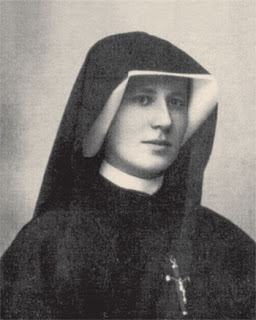
February 7, 1937 – St. Faustina Kowalska reported in her diary her bilocation to the Philippines during the 33rd International Eucharistic Congress in Manila where she received the Papal Blessing for all participants of the International Eucharistic Congress in Manila without leaving her cell in Poland.

July 16, 1935 – Declaration of Our Lady of Guadalupe as the “Heavenly Patroness of the Philippines”. On November 13, 2001, the celebration of the Feast of Nuestra Señora de Guadalupe in the Philippines was declared an Obligatory Memorial. On September 8, 2002, Bishop Socrates Villegas, DD declared the Virgin of Guadalupe as Pro-life Patroness in response to the issues on human reproduction and mortality in the country.
The Japanese Occupation
On December 8, 1941, the Second World War erupted in our country when the Japanese troops reached our territory. Many lives were taken thru systematic murder and many churches were destroyed. The Japanese did try to woo the Filipinos to cooperate with them yet they wanted the country to be part of “Greater East Asian Co-Prosperity Sphere”. One of the attempts that the Japanese forces was to win them over thru religion realizing the impact of the Catholic Church in the country that they brought with them Japanese Catholic priests and religious and used Blessed Takayama Ukon for this purpose yet they refrained on mentioning the Catholic persecution period in Japanese history, but the Filipinos were not swayed because they would remember the martyrdom of St. Pedro Bautista and other missionaries. However, their mistake was the brutal treatment of the citiznery making those attempts failed and it ended with the liberation of the country and the defeat of the Japanese forces in 1945.
1941 – Santo Domingo Church of Intramuros, Manila was bombed. Fortunately, the venerable image of Nuestra Señora del Santisimo Rosario – La Naval de Manila was spared along with other images, important documents and artifacts and was later transferred at Santisimo Rosario Parish, located within University of Santo Tomas grounds.

1941 – Rev. Fr. James Edward Haggerty, SJ was the Rector of Ateneo de Cagayan in Cagayan de Oro when the War broke out. He joined the Mindanao Guerillas and later became a key figure in the vast guerrilla movement in Mindanao which earned him the nickname “Guerilla Padre”.

1942 – Bishop Yoshiguro Cardinal Taguchi, Bishop of Osaka, was sent to the Philippines in 1942 to head the Catholic unit of the Japanese Military Administration’s Religious Section in an attempt to convince the Filipinos to cooperate and sympathize with the Japanese.

January 11, 1942 – A Japanese priest, Fr. Tukamuto, presided over a friendship Mass at Santa Cruz Church as part of the Japanese propaganda corps drive to win the Filipinos over through religion. The following Sunday, Japanese priests conducted services throughout Manila, including one in Manila Cathedral.
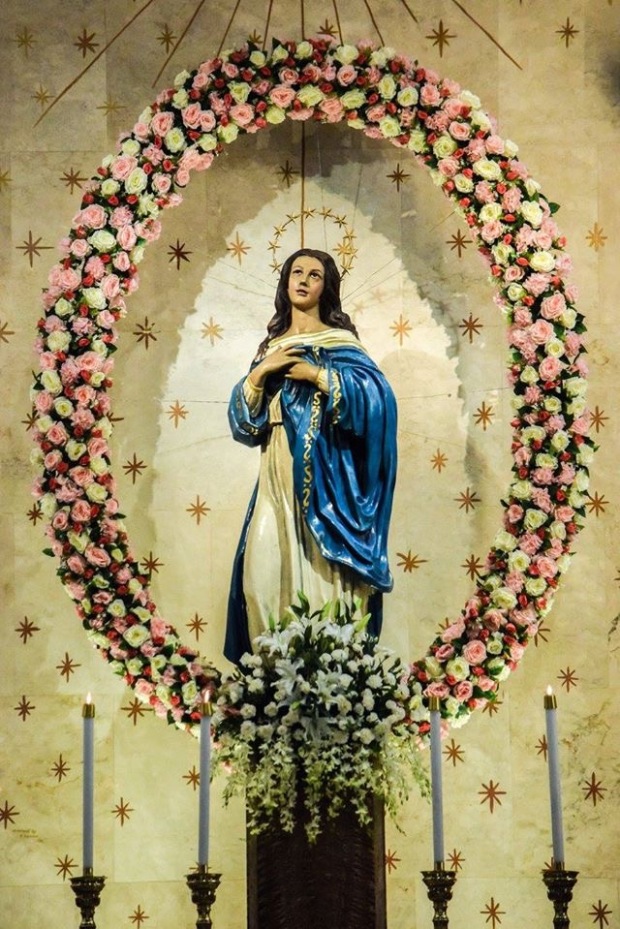
September 12, 1942 – The Declaration of the Immaculate Conception as the “Principal Patroness of the Philippines” with St. Rose of Lima and St. Pudentiana (Santa Potenciana) as the country’s Secondary Patroness.
1943 – The arrival of the The Catholic Women’s Religious Corps (CWRC) where their main duty in the Philippines was to teach Japanese language and culture. All the members of CWRC were sent to Catholic schools around Manila in addition to attending socio-cultural events that aim to link Japanese and Philippine cultures yet their efforts failed and repatriated in 1944.

March 11, 1944 – Venerable Bishop Alfredo Ma. Obviar was appointed as the first Auxiliary Bishop of Lipa and later became the first bishop of the Diocese of Lucena in 1969. Motivated by his great work for catechesis, he founded the Missionary Catechists of St. Therese (MCST) on August 12, 1958. He died on October 1, 1978 and was declared Venerable on November 7, 2018.
1945 – The Liberation of the Philippines from the Japanese forces with the return of the American troops headed by General Douglas McArthur and President Sergio Osmena.
The Rise of a Free Republic
After the onslaught of the Second World War, the Philippines was one of the most severely damaged by the War. During these trying times, the Filipinos were doing it’s best to rise up again and the Church was once again helping the nation to rise up from the ashes.
February 15, 1945 – Filipino Bishops established the Catholic Welfare Organization was established with Archbishop Gabriel Reyes as its Chairman where the bishops are aiming for a unified coordination for the Filipino faithful after the devastation of the Second World War. With the organization’s efficiency, bishops wanted to further utilize the organization for different social and spiritual issues. The CWO’s constitution was approved by Pope Pius XII in June 28, 1952. Sixteen years later, it was renamed as the Catholic Bishop’s Conference of the Philippines.
July 4, 1946 – The United States formally granted the Philippines full independence.
May 13, 1946 – The first novena in honor of Our Mother of Perpetual Help was held at St. Clement Parish in Iloilo City led by Rev. Fr. Patrick Nulty. The novena was then introduced in Lipa, Batangas on June 13, 1947 and in Baclaran on June 23, 1948.
1947 – The arrival of the Discalced Carmelite Friars in the country.
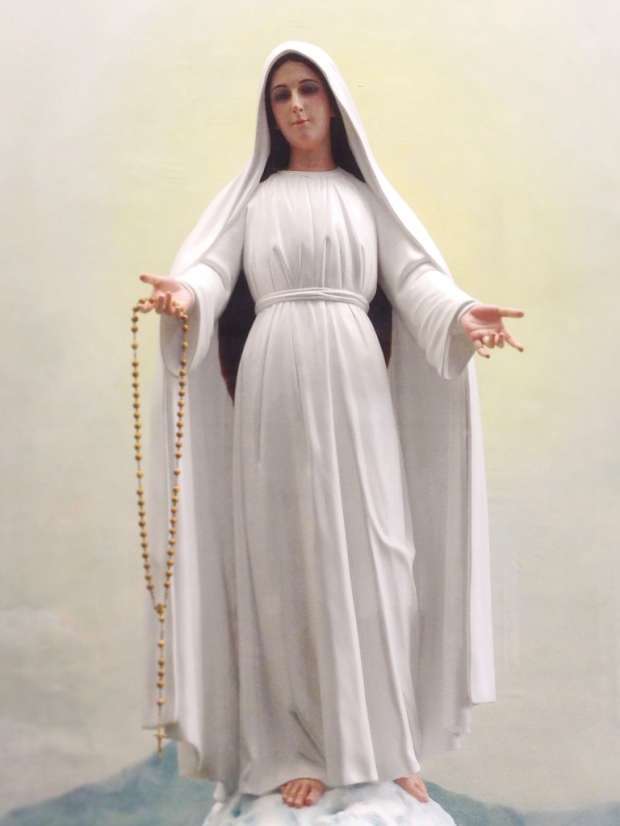
September 12, 1948 – November 21, 1948 – The reported alleged apparitions of the Blessed Virgin Mary to a Discalced Carmelite Postulant Sis. Teresita Castillo took place. The apparition allegedly emphasized the importance of the Rosary, importance of prayer for priests and nuns, the First Saturday devotion to the Immaculate Heart, and predicted some events in Philippine History from Martial Law, persecutions from other so-called Christian sects, and China’s ambition to conquer the world. On this apparition, the Virgin identified herself: “I am Mary, Mediatrix of All Grace”. A few days later, the famous shower of roses took place within and outside the convent, even on windy and rainy seasons and it always fell in the convent grounds. Images were later seen in the petals and cures are attributed to them. The apparition received a negative verdict in 1951 and was confirmed in 2016 and classified as Non constat de supernaturalitate. However, Public veneration of the Virgin under this title is still permitted, yet has to be disassociated to the alleged events by the Catholic Bishops Conference of the Philippines on July 9, 2016.
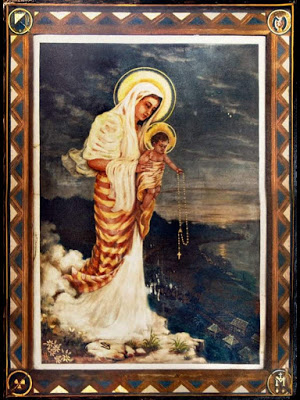
1949 – The “Barangay Sang Birhen” movement was established by Mayor Antonio Gaston in Cadiz, Negros Oriental to propagating the message of the Blessed Virgin in Fatima, Portugal and renewal of the Catholic faith in his locality. The image of Nuestra Senora de Barangay was painted by Crisogono Domingo, a leper, that became the image of the association. The image was blessed by Bishop Emmanuel Yap, D.D. in October 16, 1954.
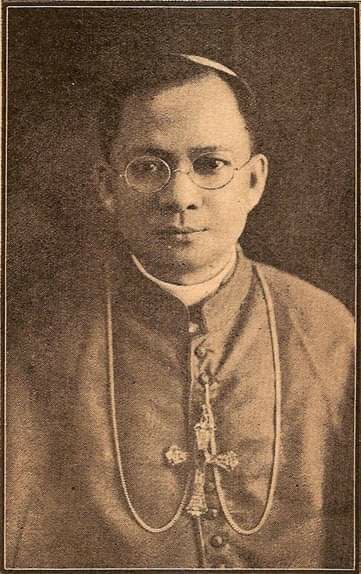
October 14, 1949 – The installation of Archbishop Gabriel M. Reyes as the First Filipino Archbishop of Manila.
April 9, 1951 – Formal establishment of Philippine-Vatican diplomatic relations with Archbishop William Piani, DD as the first Papal Nuncio to the Philippines.
1951 – The arrival of the Salesians of Don Bosco where they focused in the education and spiritual guidance of poor children in their different mission centers in the country.

1952 – Bishop Cesar Ma. Guerrero, Biahop of the Diocese of San Fernando, Pampanga (now an Archdiocese) inaugurated the Crusade of Penance and Charity in Pampanga to combat communism and socialism that was prevalent in the province under the Patronage of Virgen de los Remedios. The Virgin would tour around the province to rekindle the Catholic faith in the province and it became a success. The Indu of Kapampangans was later Canonically Crowned on September 8, 1956.
January 7 – 25, 1953 – The First Plenary Council of the Philippines was held in Intramuros, Manila to address the concerns of the Church after the Second World War.
October 1, 1953 – Archbishop of Manila Rufino Cardinal Santos established Catholic Charities, which will be later be known as Caritas Manila, as a social welfare program “for uplifting the spirit and soul of the unfortunate members of our community, to assist them in all their needs, and to bring the help of God in their miseries and distress.”
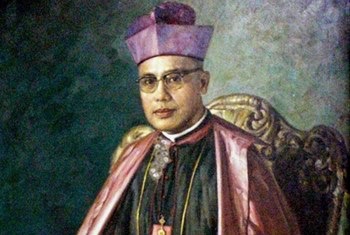
March 25, 1955 – Servant of God Bishop Teofilo Camomot was appointed auxiliary bishop of Jaro, Iloilo and later to the Archdiocese of Cagayan de Oro in 1959. Due to kidney problems, he had to resign his position as coadjutor archbishop in 1970. He came back to Cebu and was assigned in Santo Tomás de Villanueva Parish in Barangay El Pardo, Cebu City. Bishop Camomot would kept himself busy by visiting the poor especially those who are sick and later established the Daughters of St. Teresa in 1960. Bishop Camomot died by a freak accident on September 27, 1988 and his cause for sainthood was introduced in 2010, with the approval of the Holy See.
August 15, 1957 – The arrival of Congregation of the Most Blessed Sacrament, known as the Sacramentinos, in Manila upon the request of Archbishop Rufino Cardinal Santos and took over the administration of Sta. Cruz Church in Manila. The Sacramentinos are known to foster great devotion to Our Lord in the Blessed Sacrament.
March 16, 1958 – The arrival of the Order of Carmelites of the Ancient Observance in Negros Occidental. On July 16, 2013, the Filipino Carmelites (OCarm) would establish the Carmelite Province of Bl. Titus Brandsma.
1960s – Rev. Fr. Eduardo Hontiveros, SJ, along with Rev. Fr. Tim Ofrasio began the composition of liturgical music in the vernacular language which can still be heard today.

March 28, 1960 – Archbishop Rufino Cardinal Santos became the First Filipino Cardinal of the Roman Catholic Church.
1964 – Opus Dei began its apostolic work which was initiated by two Filipino members who were economists Bernie Villegas and Jesus Estanislao.

1965 – The visit of Venerable Fulton Sheen, a renowned American bishop and televangelist, to the Philippines as part of the Fourth Centenary of Christianization in the Philippines.

April 28, 1965 – The Canonical Coronation of the image of Santo Niño de Cebu in celebration of the Fourth Centenary of Christianity in the Philippines. The image of the Santo Niño de Cebu is by far the only image of the Child Jesus in the country with such honor. The Church of the Santo Nino was also declared as Minor Basilica and Pope St. Paul VI recognizes the role of the Basilica of Cebu as “Mater et Caput omnium ecclesiarum Insularum Philippinarum” (Mother and Head of All Churches in the Philippines).

December 6, 1966 – March 25, 1972 – The reported alleged apparitions of the Blessed Mother to Belinda Villas (the main seer), Mercilita Cajayon, Dalisay Tameta, Edna Villas, Matilda Somintac, Mindadelia Tulaylay, Erlinda Villas and Gloria Tulaylay at Cabra Island, Occidental Mindoro. As of this writing, no definitive decision was given and the Cabra events are being reconsidered for re-opening its investigation.

April 11, 1969 – The Catholic radio station “Radyo Veritas” was established.
The Dark times of Martial Law
On September 21, 1972, President Ferdinand Marcos placed the Philppines under Martial Law which aims to prevent the sprad of communism in the country. However, what actually happened was quite opposite, it became a measure of militart abuse, corruption and 21 year dictatorship that killed numerous politicians, activists, students, priests and religious – a very dark time in the Modern Philippine history. The Church at this period became a solace of the marginalized and later would play a role on opposing the abuses of regime that would culminate in EDSA People Power Revolution of 1986.

November 27 – 29, 1970 – Pope St. Paul VI visited the Philippines – the First ever Pontiff to visit in the country

March 19, 1974 – Archbishop Jaime Cardinal Sin was installed as Archbishop of Manila. Cardinal Sin established “Caritas Manila” and he was instrumental in the historic and peaceful 1986 People Power Revolution, which toppled the dictatorship and ended Martial law under Ferdinand Marcos and installed Corazon Aquino as President of the Republic of the Philippines. Cardinal Sin died on June 21, 2005 and a state funeral was accorded to him in recognition of his role on restoring democracy in the country.

1975 – The Santo Niño de Malolos Foundation, Inc. was established to propagate the devotion to the Santo Niño de Malolos by holding the annual Santo Niño Exhibit – a first of its kind the country and procession along with charity works. The devotion to the Santo Niño de Malolos became widespread and became the center of the Santo Niño devotion in Central Luzon.

1976 – 1995 – St. Teresa of Calcutta, Foundress of the Missionaries of Charity made several visits to the Philippines on different occasions.
1979 – The television show “Sharing in the City” hosted by Rev. Fr. Erasmo “Sonny” Ramirez, OP, one of the pioneering Catholic televangelists in the country, made it’s television debut on RPN Channel 9. The show ended in 2007.
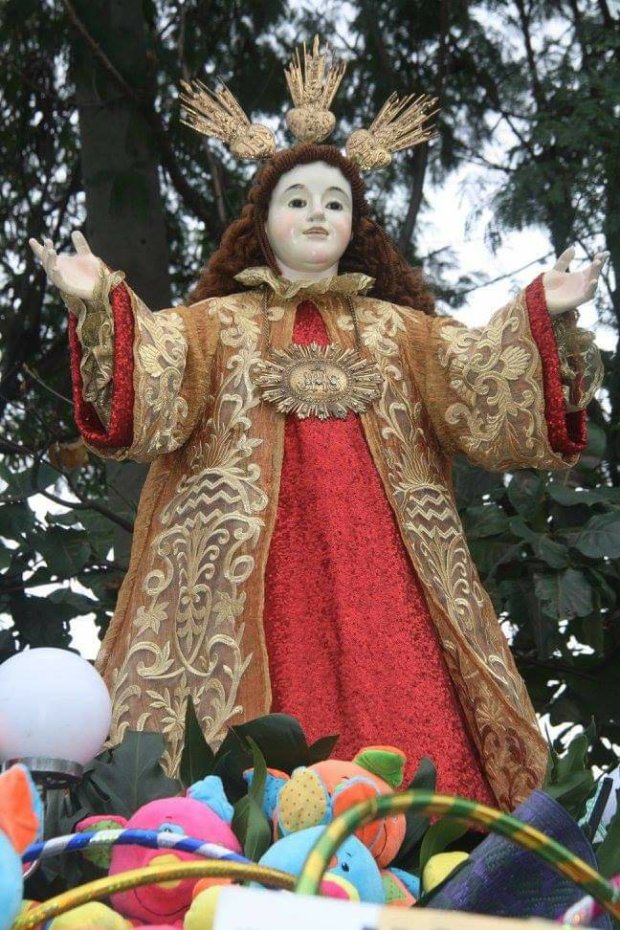
October 27, 1979 – The establishment of the Congregacion del Santisimo Nombre de Jesus which hosted the annual Santo Niño exhibit and Grand Procession at Roxas Boulevard in Manila held every Last Sunday of January.
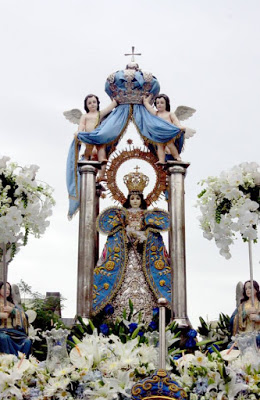
December 1980 – The Cofradia de la Inmaculada Concepcion, Inc. held its first annual Grand Marian Procession in Intramuros, Manila featuring different images of the Blessed Virgin Mary from private individuals and shrines from all over the country. The annual procession, held every first Sunday of December, became one of the biggest Marian festival in the country in honor of the Immaculate Conception – The Principal Patroness of the Philippines.

February 17 – 22, 1981 – Pope St. John Paul II made his first Papal Visit in the Philippines on a tour in Manila, Quezon City, Cebu, Iloilo, Camarines Sur, Davao, Baguio and Bataan.

February 18, 1981 – Pope St. John Paul II beatified St. Lorenzo Ruiz and companion martyrs in Manila, the First beatification rite held outside Rome.
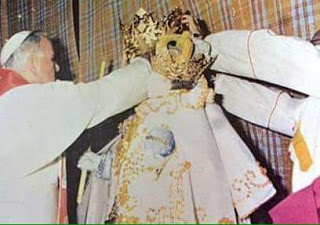
February 21, 1981 – Pope St. John Paul II officiated and personally performed the act of Canonical Coronation of Nuestra Senora de Candelaria de Jaro of Jaro Cathedral, Iloilo making her the lone venerated Marian image in the country Canonically Crowned by a Pontiff in person. The Virgin of Jaro was also proclaimed as the “Patroness of Western Visayas”.
1984 – The El Shaddai Charismatic Movement was established by Bro. Mike Velarde and it became one of the most influential Catholic movements of its time.

1984 – The arrival of the National Pilgrim Image of Our Lady of Fatima in the Philippines which was blessed by St. Paul VI and Servant of God Sister Lucia of Fatima. The National Pilgrim Image became one of the most prominent figures during the People Power revolution of 1986 and she became the forefront of the most renown unbloody Popular Revolution. The image received the honor of Episcopal Coronation on May 13, 2017 – the Centenary of the Fatima Apparitions.

1985 – The Catholic Bishop’s Conference declared a Marian Year in honor of the 2000th Birthday of the Blessed Virgin Mary (the only nation to do so) and to ask for her help through prayer and fasting to grant peace for the country which is under Martial Law.

June 16, 1985 – Through the efforts of Don Emil Castro, a television broadcaster, Msgr. Josefino Ramirez and the Divine Mercy prayer groups from all over the country formally launched “The 3 O’Clock Prayer Habit”, a television spot where the now famous Three O’Clock prayer is aired in all television stations nationwide that helped propagate the devotion to the Divine Mercy. The campaign was a triumphant success for this became an integral part of Filipino daily prayer habit and it is said that numerous conversions, miracles were reported and lukewarm Catholics became fervent all because of this simple prayer habit.

February 22 – 25, 1986 – Manila Archbishop Jaime Cardinal Sin calls for People Power that was held in EDSA that ended the 21 year Marcos dictatorship and Mrs. Corazon Aquino, wife of the assassinated opposition figure Benigno “Ninoy” Aquino, became the First Woman President of the Philippines.
The Post People Power Era
Once Democracy was restored in 1986, the nation was starting all over again to face the challenges of the times. It is here that the faith was once again reinvigorated and some key events in modern history took place at these times.

1987 – 1993 – The reported alleged apparitions of the Blessed Mother to Judiel Nieva in Agoo, La Union and introduced herself as “Immaculate Queen of Heaven and Earth”. The alleged apparition gave numerous messages to the seer accompanied by some “miracles” from transformation of Sacred Host to a piece of human flesh, images of the Virgin Mary “weeping” tears of blood and a dancing sun. In 1993, a theological commission was established by Bishop Salvador Lazo that condemned the events as Constat de Non Supernaturalitate (clearly evident to be not supernatural) due to fraud and found that the alleged supernatural events were simulated. The decision was affirmed in 1995.
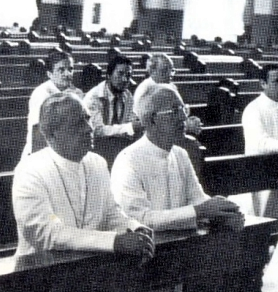
January 21 – February 1, 1987 – The visit of Blessed Alvaro Portillo of Opus Dei in the Philippines. He made stops to different Marian Shrines and Opus Dei centers in the country and gave the image of Stella Orientis to the chapel of University of Asia and the Pacific in Mandaluyong City.
March 7, 1987 – The weekly television show “Family Rosary Crusade” of the Congregation of the Holy Cross made it’s television debut on ABS-CBN Channel 2. The program was known for the propagation of the pious practice of daily Family Rosary. The program is known for delivering the slogan of Venerable Partrick Peyton: “The Family that prays together, stays together.”

October 18, 1987 – The Canonization of St. Lorenzo Ruiz and Companions at St. Peter’s Square in Rome.
1989 – The arrival of the Sons of Holy Mary Immaculate from Italy who would focus on spiritual direction of the people thru publication of books and apostolic work.
January 20 – February 17, 1991 – The Second Plenary Council of the Philippines was held to address the challenges of modern times and how the Church can move forward with the reforms of the Second Vatican Council.

August 15, 1991 – The beginning of the reported appearances of the Blessed Mother as “Mother of Eucharist and Grace” to Carmelo Cortez in Bulacan. No definitive decision was given as of this writing yet the Chapel of Mary, Mother of Eucharist and Grace was declared a Diocesan Shrine on December 12, 2006.

January 15 – 20, 1995 – Pope St. John Paul II made his Second and final Papal Visit in the Philippines for the World Youth Day in Manila.
The New Millenium
As the Great Jubilee Year 2000 sets in, both the Church and the Nation faced more challenges in the ever changing pace of the world. It was in these times that modern technology was fast rising and fortunately, the Church was able to adapt and find ways to evangelize in these modern age.
2000, 2008, 2013, 2018 – The Philippine visit of the Pilgrim relics of St. Therese of the Child Jesus from her Basilica in Liseux, France.

January 17 – 20, 2001 – The Second EDSA People Power took place this time at the Shrine of Mary, Queen of Peace of EDSA to topple then President Joseph Estrada due to plunder. Then Vice President Gloria Macapagal – Arroyo was sworn to presidency making her the Second Woman President of the Philippines.

December 17, 2002 – The launch of Cebu Catholic Television Network
January 25 – 26, 2003 – The 4th World Meeting of Families was held in Manila. Pope St. John Paul II was suppose to make his final visit to Manila but it was prevented to do so due to his long bout with Parkinson’s disease that cause his death in 2006.

2006 – Servant of God Darwin Ramos was admitted at the Tulay ng Kabataan Foundation and lived with children with special needs caused by different disabilities. He discovered the Catholic faith and was baptized on December 23, 2006. Despite of his painful condition, he uplifted the staff and the children at the Foundation by the way he lived with his illness with a smile and treating it as a “mission” from the Lord. Darwin died on Sunday, September 23, 2012 and his cause for sainthood was was formally opened on August 28, 2019.

2007 – TV Maria went on air
November 20 – 27, 2009 – 5th Asian Youth Day held in Imus, Cavite.

October 21, 2012 – The Canonization of St. Pedro Calungsod at St. Peter’s Square in Rome by Pope Emeritus Benedict XVI.
October 16 – 18, 2013 – The First Philippine Conference on New Evangelization was held at the UST gymnasium.

January 15 – 21, 2015 – Pope Francis made his Papal Visit in the Philippines in Manila and Palo, Leyte.

January 24 – 31, 2016 – The 51st International Eucharistic Congress was held in Cebu.
January 3 – February 28, 2017 – The First Philippine visit of the relics of Sts. Louis and Zelie Martin – the Parents of St. Therese of the Child Jesus from St. Therese’s Basilica in Liseux, France.
January 16 – 20, 2017 – The 4th World Apostolic Congress of Mercy held in the Philippines.

May 23, 2017 – The Maute group attacked Marawi City where the rebel groups began destroying churches and shrines, including St. Mary’s Cathedral where they desecrated the image of Maria Auxilidora and other holy images in the Cathedral. What makes the situation more disturbing is that Rev. Fr. Teresito Suganob, MSP along with the cathedral staff were taken hostage. The city was liberated from terrorism on October 17, 2017, a few days after the Centenary of the last apparition of Our Lady of Fatima on October 13 of the same year and battle operations officially ended on October 23, 2017. A new image was later commissioned and was later enshrined at Sto. Tomas de Villanueva Pro-Cathedral Parish on May 5, 2018.

October 5 – 26, 2018 – The Philippine visit of the Incorrupt heart relic of St. Padre Pio of Pietrelcina where millions of the faithful flocked the churches where the relic was exposed for veneration.
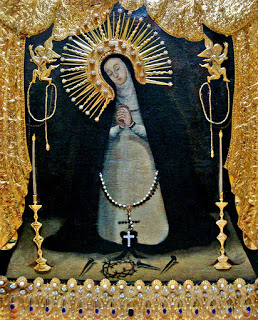
November 24, 2018 – The image of Nuestra Senora de la Soledad de Porta Vaga was declared as National Cultural Treasure for it’s tangible and intangible heritage and cultural importance (i.e. devotions and festivities in her honor).

July 13, 2019 – Rev. Fr. Gerardo Francisco Timoner III, OP became the First Filipino and First Asian to became the Master of the Order of the Order of Preachers (Dominican Order), one of the major and influential religious orders in the Catholic Church and the 88th Successor of St. Dominic de Guzman

December 8, 2019 – His Excellency Luis Antonio Cardinal Tagle became the First Filipino Prefect of the Congregation of for the Evangelization of Peopless – an office in the Roman Curia.
December 15, 2019 – The first Papal Celebration of Simbang Gabi at St. Peter’s Basilica in Rome.
Towards 500 Years and beyond
March 18, 2020 – The Healing Rosary for the World began it’s first Wednesday Weekly streaming at the Manila Cathedral and numerous shrines, parishes, prelates, congregations and orders participated to ask the intercession of Our Lady to end the COVID-19 pandemic.
May 1, 2020 – His Eminence Luis Antonio Cardinal Tagle was appointed as the First Filipino Cardinal-Bishop – a designation described as one of the highest-ranking princes of the Catholic Church.

March 14, 2021 – The image of Maria Santisima del Sagrario of Malaga, carved by a Filipino Sculptor and Papal Awarde Willy Layug, was formally blessed in Malaga, Spain. The image is a gift of the Filipino faithful to Spanish Catholics in line with the celebration of the 500 Years of the Catholic Faith in the country.
March 14, 2021– Pope Francis offered Holy Mass for the celebration of the 500 Years of the Catholic Faith in the country with the Filipino community at St. Peter’s Basilica in Rome.
April 14, 2021 – The National Historical Commission of the Philippines declared the Minor Basilica of Santo Niño de Cebu as National Cultural Treasure.
May 1, 2021 – The National Consecration of the Philippines to St. Joseph will be performed. The National Consecration is part of the celebrations of the 500 Years of the Catholic Faith in the country and the Year of St. Joseph that His Holiness Pope Francis declared in 2021.
A faith we cherish as a nation
For 500 Years, the Catholic Faith was embraced in our country and it became our own and played a major role in our history and nation building – for better and for worse. The Early Church Fathers like St. Augustine understood that God was speaking to his people through history and we see that in these key historical events in our nation, we should look at it as a way of God calling his people to himself. The Catholic faith became most embedded in Filipino culture and it continues to permeate values throughout Filipino society for centuries As we continue to move with the times, let us continue to ask Our Lord, Our Lady and Our Holy Men and Women for their help in this journey of faith as we now celebrate this great gift Our Lord gave to our nation.
References:
Albano, T. Jofransyden O. “The Apparitions of Cabra Islet, Philippines”. Alver Tied Charities and Cultural Circle, 1979.
Alingan, Rodel, OP, “Pasyon”, UST Publishing House, Manila, 2001.
Aviado, Lutgarda, Madonnas of the Philippines, Manlapaz Press, Quezon City. 1972.
Barcelona, Mary Anne, Ynang Maria: a celebration of the Blessed Virgin Mary in the Philippines. Ed. Consuelo B. Estampa, P.D. Pasig City, Anvil Publishing Inc., 2004.
Brazal, A., Cueto, V., Echica, R., Gaspar, K., Mansueto, T., Picardal, A., Ronquillo, C., Sapitula, M., “Our Mother of Perpetual Help, Icon and the Filipinos, Multidisciplinary Perspectives to a Perpetual Help Spirituality”, Institute of Spirituality in Asia, Redemptorist Province of Cebu and Vice Province of Manila, 2017.
Castro, June Keithley, Lipa with the original account of th events at Lipa Carmel in 1948 by Mother Cecilia of Jesus, OCD, Cacho Publishing House, Mandaluyong City, 1992.
Cofradia de la Inmaculada Concepcion Foundation, Inc. “Santa Ana Church of Manila, Parish of Our Lady of the Abandoned, A Historical Guide” Intramuros, Manila, 2014.
Cuesta, Angel, OAR, Eguiarte, OAR, “Holiness and Heroic Wirness, Augustinian Recollect Saints and Blessed”, Order of the Augustinian Recollects, Province of St. Ezekiel Moreno, 2014.
“Daughters of St. Paul History and Charism”, Retrieved from https://paulines.ph/who-we-are/history-charism/ on March 30, 2021.
Delos Reyes, Michael P., “Salve Regina: On Crowning image of the Virgin Mary”, Claret Communications Foundation Inc., Quezon City, 2015.
Declaration of the Diocesan Shrine and Solemn Pontifical Coronation of Nuestra Señora de la Soledad de Porta Vaga Souvenir Program, San Roque Parish – Diocesan Shrine of Nuestra Señora de la Soledad de Porta Vaga, 2018.
Dominican Sisters of the Most Holy Rosary of the Philippines, “Mothee Rosario Arroyo de la Visitacion, Foundress”, Makinauagalingon Printer and Bookbinder, Molo, Iloilo City, 2011.
“Father Ireneo Rodriguez Gonzales (1879 – 1836), Retrieved from https://famvin.org/wiki/Father_Ireneo_Rodr%C3%ADguez_Gonz%C3%A1lez_(1879-1936) on March 31, 2021.
“Gifted to Give – 500 Years of Christianity in the Philippinee Executive desk calendar 2021” Word and Life Publications, Makati City, 2020.
Gorospe, Vitaliano, SJ, and Javellana, R., “Virgin of Peñafrancia, Mother of Bicol”, Bookmark Inc., Makati City, 1995.
Harper, Anna Maria, “Santa Cruz Church, A Living Heritage”, University of Santo Tomas Publishing House and Santa Cruz Parish Pastoral Council, 2004.
“History of the Philippine Church”, Retrieved from https://www.facebook.com/DoctrinaChristianaPH/ on March 20, 2021.
Huerta, Felix de (1865). Estado geográfico, topográfico, estadístico, histórico-religioso. Binondo: Imprenta de M. Sanchez y Ca.
“Kasaysayan ng Mahal na Patrona – Nuestra Sra. Del Pilar ng Morong, Bataan”, Retrieved from http://www.morong.gov.ph/index.php/news/80-kasaysayan-ng-mahal-na-patrona-nuestra-sra-del-pilar-ng-morong-bataan on October 16, 2019.
Matias, Jess and Ortiz, Albert, “Heralds of the Great King, The Lives of the Capuchin Franciscan Saints”, St. Paul’s Philippines, Makati City, 2013.
“Novena in honor of Nuestra Señora de Guia, Oldest Marian image (1571), Archdiocesan Shrine of Nuestra Señora de Guia, Ermita, Manila.
Pangan, John Kingsley, “Church of the Far East”, St. Pauls Piblications, Makati City, 2016.
Pedrosa, Ceferino, “Witness of the Faith in the Orient, Dominican Martyrs of Japan, China and Vietnam”, Provincial Secretariat of Missions, Dominican Province of Our Lady of the Rosary, Hong Kong, 1989.
“Probing the Flores de Mayo”, Retrieved from https://cappellagregoriana.wordpress.com/ on May 3, 2020.
Trota Jose, Regalado, “Simbahan, An Illustrated Guide to 50 of the Philippines” Must-Visit Catholic Churhes, RPD Publications, Makati City, 2021.
Trota Jose, Regalado, “A compact history of the Shrine and Parish of Our Lady of Rosary of Manaoag”, Minor Basilica of Our Lady of the Rosary of Manaoag, Manaoag, Pangasinan, 2011.
Saenz Mendoza, Virgilio, La Virgen de la Soledad de Porta Vaga: Reina de Cavite, La Excelsa Patrona y La Celestial Guardiana y Protectora de la Provincia y la Ciudad de Cavite. Diocese of Imus, Imus, Cavite., 2017.
Santiago, Luciano, “Stars of Peace: The Talangpaz Sisters” Congregation of the Augustinian Recollect Sisters, Manila, 2001.
Santiago, Luciano, “The Hidden Light: The First Filipino Priests”, New Day Publications, Quezon City, 1987.
Santiago, Luciano, “To Love and to Suffer, The development of the Religious Congregation for Women in the Spanish Philippines, 1565 – 1898”, Ateneo de Manila University Press, Quezon City, 2005.
Sanchez, Francisco, La Virgen Maria Venerada en sus Imagenes Filipinas, Manila: Imp. De Santos y Bernal, 1904.
Tesoro, Salud, “Mary concieved without sin, Mary Mother of God”, ML Tesoro Castañeda, Manila, 1988.
Veloso, Aaron James, “The Apostolic Delegation in the Philippines during the Second World War”, Retrieved from https://www.academia.edu/24657416/The_Apostolic_Delegation_in_the_Philippines_during_the_Second_World_War on March 31, 2021.
Vengco, Sabino Jr., “Shaping the Filipino Marian Piety”, St. Paul’s Publications, 2019.
Villaroel,Fidel, OP, The Aguinaldo Masses: Origins, Setbacks and Survival, Philippiniana Sacra, Vol XXXIV, No. 102 (Sept.-Dec., 1999) 487-509.
Photographs and Artworks:
Almadrones, Maurice
Bravo, Julio
Cruz, Dan Raphael
Carreon, Ryan
Figueroa, Jun
Galera, Kharl
Innocencio, Glenn
Lomague, Mervin
Philippine Daily Inquirer
Malabanan, James Benedict
Manila Cathedral Facebook page
Maturan, Dennis
National Shrine of Our Lady of the Abandoned, Manila
National Shrine of Our Lady of Fatima, Valenzuela City
National Shrine of St. Joseph, Mandaue, Cebu
Naval, Wilfred Jason
Santiago, Luciano
Santo Nino de Ternate Parish, Ternate, Cavite
+AMDG+ +AMPSPC+

Very good blog?…, people are talking about this on our blog.😐 😃
LikeLike